
Native Heroes for Character Building: Issues with Villains and Victims in Storytelling
"Did you hear about Kaleb Nowater? Maybe his name was Kevin. I'm not sure, but it was a K name for certain. Come to find out, he was sexually assaulted by a worker at that children's group home. By whom? It was ol' what's his face. I forget, but he likes to surround himself with those wannabe artists. Anyway, they fired him because they caught him sleeping during overnight shifts in that poor boy's room. Awful. And imagine all those artists who just look the other way. I wonder if they know. More so, I wonder if they care more about their reputation than a child getting harmed. Just makes me sick to my stomach thinking about it. Who makes sexual advances on a teenage boy with emotional and psychological issues?"

So the above paragraph does a lot of interesting things. I'll not breakdown all the elements here. What I'd like to focus on is the dynamic between "the child with the K name" and "ol' what's his face." The victim and the villain. Immediately, we get caught up in the drama of the situation. It's intense. Someone is manipulating vulnerable teenage boys for sex. Our protective senses kick in and it makes us want to reach into the story to protect the victim. So this is perfect. This is exactly what writers want to do with a narrative.
But is this sustainable? Can we go on for page after page with this victim and villain pattern? Now what if I said the pedophile was Cherokee and the victim was Creek? Now we are instantly shinning a spotlight onto entire communities of color. And communities of color from the smallest minority in America. We can't overlook this dynamic because the stories we release into the world have real implications. People respond. People are affected. Lives can be altered. Legacy's can be ruined. And in an instant.
For some reason, I keep crossing Native characters being perpetuated as extreme victims or extreme villains. Now we're immediately drawn to the language in the first paragraph because it resembles how we talk amongst each other in our own communities. This is how we protect our children. Unfortunately, convicting someone of a sexual crime on a child is incredibly hard to do. So what do we as heroes do? We protect our families. We tell each other who is doing what so that families will keep their children away from predators, so employers will know who not to hire. With the initial language above, our protective factors jump in and our interest heightens.
Not only does the narrative implicate the villain, but it also implicates an entire group of people. A cult, if you will. It alludes to a cover up, or at minimum people looking the other way. And if we place this in the context of Cherokee people, the villainy suddenly paints the entire community in a certain light. It makes us ALL look bad. And keep in mind that we have some of the highest disparity rates in the U.S. The last thing we need is to have an even worse disparaging look as Native people.
As Native artists, we have to consider these variables. What is this going to look like? Is this an accurate portrayal of Native people? Ultimately, what image will Native people have?
Now, this doesn't say we don't write about serious issues. On the contrary. We, as Native artists, have an obligation to capture the worst, like underground pedophiles, so as to create topics of discussion. This goes back to keeping our communities safe. My point here is that instead of focusing on the victim and villain, we should be looking at the heroes in the situation.
Let's consider if "the child with a K name" comes back as an adult and confronts his abuser. Now we've turned the victim into a hero. What if we refocused the narrative to spotlight the victim getting his revenge? Then not only do we get a chance to see multiple sides to the character, but Native communities of color are seen as the heroes, and having the ability to tackle serious issues ourselves. Moving away from needing a white savior to rescue us. So in the spirit of empowerment let's rephrase the first paragraph:
"Did you hear about Kaleb Nowater? Maybe his name was Kevin. I'm not sure, but it was a K name for certain. Come to find out, he went after a former worker at that children's home. Who did he go after? It was ol' what's his face. I forget, but he likes to surround himself with those wannabe artists. Anyway, it turns out Kaleb was a foster child in that group home and he was sexually assaulted by that worker. It was during overnight shifts in Kaleb's room. Awful. But Kaleb came back and told all those artists about his abuser. Do you know what they did? Well, I'm a good Christian so I can't say, but I'll tell you this: That pedophile checked himself into a hospital for "mental health" issues. But we all know what that means, right? So glad Kaleb finally had his day."
Now that's a story worth telling!
(Image above borrowed from wikipedia)
Gritty Conversational: A Contemporary Native American Voice to Combat Erasure
So I was sitting in a classroom at the University of Oklahoma. This was about a decade ago. I was in my master's program and it was a special topics course on heteronormativity in American culture. We were discussing James Baldwin's work, and the professor said, "I love Baldwin's writing and I don't know how he does it." Then he looked at me. We locked eyes for a moment. I'm the only one in this MA program who has a BFA in Creative Writing. I immediately thought, I know how he does it. But before I had a chance to respond, he quickly stated, "And I don't want to know," as if he knew I was about to break the spell.
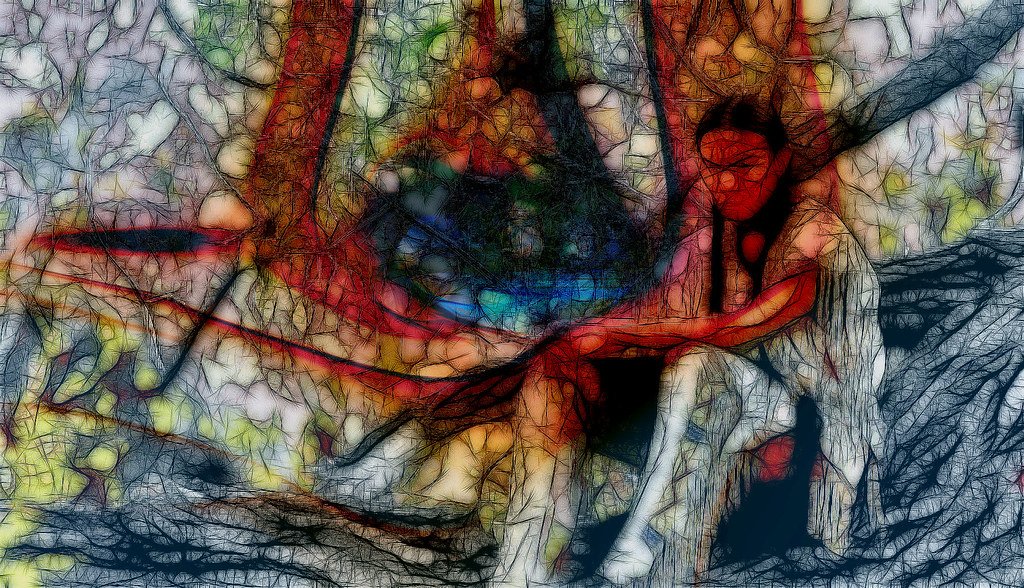
What we writers do can appear to have a magical quality. And after you've gone through a BFA or MFA program you learn all the craft techniques, like how to capture a plot, who to draw as a character, and, moreover, what voice to use to cast your spell.
This weekend I've thought a lot about my debut novel and varying elements within it, like structure, theme, character, and voice. I could talk for days on each of these, but often it's the latter that stumps most. Voice is elusive. While I thought about how the theme of my novel ties into the title, wanting to connect this for readers who might ask or for readers who might be interested in the larger thematics, but what I landed on was voice.
I thought about some of my favorite authors and how their writing styles are described. Words like conversational, gothic, magical, rural, and emotional kept popping up. Then I reflected on my own writing style or voice and came to each of the descriptors above. Often the writers we adore blend into the writer we become. And I landed most often on a single phrase: gritty conversational.

I'm a regionalist writer interested in capturing intertribal, multicultural, and transnational dynamics of my home communities--Tahlequah and Lawton, Oklahoma. As an engine for my writing, I'm most interested in realism. And the reason has to do with the romantical perspective people have about Natives. There seems to be this drive to reduce Natives to ahistorical tragic figures or overtly spiritual beings, like we're not contemporary people living and struggling inside a postmodern society.
Trying to convince people that we're human is a fulltime job in itself. Many of the depictions of Native peoples are of the above situations, and when both ahistorical tragedy and spirituality are mixed it becomes a much more harmful version of erasure. It's the modern version of the Pristine Myth, where people want to believe we Natives are no longer here, that Natives don't truly exist. We are either other worldly or in the past.
So I end up writing the grittiest version of who we are, because this captures Native people as being like everyone else. We work, care for our kids, do idiotic shit, love hard, fail even harder, and triumph in the last minute. But simply saying those words doesn't do enough. Readers need the emotional ride to truly understand, to truly grasp how we fit into the fabric of a global community.
This morning, I thought about my professor from back in the day, who wanted to be spellbound, and I couldn't help but think about how many readers want the Pristine Myth, they want Natives to be some sort of bizarre ahistorical tragedy comeback from the dead to save their souls. So weaving these stories with my "gritty conversational" style is a magic meant to wake readers from what they believe is a beautiful dream--but to us Natives it's the transformed but continued nightmare that began 530 years ago.
Self-Imposed Crippling Frustration Under a Wave of Social Justice Advocacy
It was Saturday night when I knew I'd smudge myself and my house with sage the next day. There had been a build up. With the media exposure of police shootings and the new energy for social justice as a response, I was caught up in the energy. But not without personal justification. Under Trump's toxic atmosphere, my beloved Cherokee community quickly became as divisive as the rest of America.

I started to hear comments that I hadn't heard before, and this time from the mouths of racially white Cherokees. What happened? Why were dark skinned and full blood Cherokees so viscerally hated? And all of a sudden?
Well, it wasn't all of a sudden. This divide between full-blood, half-blood, and racially white has been a part of Native communities for a long time. We can go back as far as the initial reservation era of the 1800s. Take Quanah Parker (Comanche) for example, who is depicted in the image above. He was half white and half Comanche. While the Comanche people did not elect Quanah as their spokesperson, the U.S. government made it clear to the tribe that Quanah would be the only person they were going to deal with. So the Comanche chiefs who were elected inside the community were ignored, while Quanah was selected by those in power.
Why do Natives only gain access when we display an allegiance to white supremacy?
It's unfortunate how we can't overcome this history, where race determines power, as opposed to ability, talent, and strength. Ta-Nehisi Coates writes, “But race is the child of racism, not the father.” And we've heard since the 1990s that "race is a social construct." But then again, everything humans do is a social construct, and this particular construct has murdered millions, enslaved millions, and continues to oppress millions today.
So why was I hearing comments? Why were decisions being made that had full blood Cherokees scrambling? All of a sudden I was reminded of my teen years growing up in Tahlequah, when Cherokees were murdered for being Cherokee, when Cherokees talked about the underground culture in hushed tones, and when Cherokees all too often contorted ourselves under the boot heels of white supremacy.
Then as an adult I moved away for a decade.
When I returned to Tahlequah in 2015 I found a very different Cherokee Nation. There were liberal white Cherokees displaying themselves as allies to "identifiable" Cherokees. There was more willingness to engage and the blatant racism that I once encountered had seemed to disappear.
Then Trump was elected.
Slowly there was an erosion. I started to hear more and more underhanded comments about "identifiable" Cherokees, which is a new white supremacist term for targeting anyone who has traditional Cherokee phenotypes: Dark skin, high cheek bones, strong jawlines, narrow eyes. More and more of my racially white peers would say "Indian this" and "Indian that," and I'd think to myself, "I thought you were Indian." But according to the UNSPOKEN racial line, they were not Indian like "identifiable" Indians. Racially white Cherokees were somehow superior. This language grew and grew over the last four years until it reached a point recently where racially white Cherokees were blatantly and openly talking about "Drunk Indians" and how "identifiable" Cherokees were criminals. The tone was etched with superiority, leaving dark skinned and full blood Cherokees feeling like we had no power, like we were being targeted. And you have to understand, the majority of enrolled Cherokees are racially white. It's not a spectrum, not even close. Those of us who live and work here know the truth. "Identifiable" Cherokees are the minority. Cherokee Nation's racial makeup is identical to the U.S. The darker your skin, the harder your life.
I watched full bloods in my circles cower and back down when racist comments were made. Completely silenced. And half-bloods who have a full-blood parent biting their tongues. Some of us have spoken up, but it doesn't come without feeling like we're going to receive retaliation, retaliation for asking people to not say "drunk Indian." Can you believe that? Basic human decency. It's frustrating that we have to beg to be treated like people. It's frustrating that I have to remind folks that we're human beings. Why is it so extreme to have respect reciprocated? Why would I have to say, "I can't breathe," when it should be obvious that racism is a social choke hold?
I started writing this post wanting to write about how I needed to let go of the frustration, how maybe it was crippling me to think about it. More or less, blaming myself. But now? I wonder if racially white Cherokees ever think about crippling their own supposed brothers and sisters? That's what we're supposed to be, right? Brothers and sisters? We all come from "One Fire," right? If so, why do they make comments like their not Native? Why do they limit how many dark skinned Natives get positions of power? Why do they fear dark skin so much that they'll have just one or two "tokens" to keep in their back pockets? If we all come from "One Fire," why did I have to write this fucking post?

(Images were borrowed from commons wikipedia)
Giving Back: Murrow Indian Children's Home Needing Assistance
I get mentally stuck sometimes, and frustrated, when I think of the disparity rates in the communities I serve. I'm Cherokee and Kiowa. I live in Tahlequah, Oklahoma and work for Indian Child Welfare. I've worked my entire career serving Native communities, working diligently to correct the disparity rates, and every time I see a Native person walking down the street strung out on meth, fidgeting and impulsively picking at their skin (the telltale signs of meth addiction), it breaks my heart. I get frustrated at the disparity rates among Native Americans and see first hand the negative impacts caused by historical trauma.

There is one way to change the disparity rates and that's by giving to a well vetted Native organization, like the Murrow Indian Children's Home in Oklahoma. It's more commonly called the Murrow Home for us locals. They provide care for Native children and are currently in need of specific items. Below you'll find a link to their official Facebook page:
We all want to help and often we don't know how. While I've dedicated my career to working with Native youth, many of us have occupations outside this field but equally want to contribute. My recommendation is to go through the process of vetting Native organizations. Don't wait for a Native person to do so. It can be frustrating for people of color to always have to do the leg work. If I can care enough about Native people that I'll do the work to track down organizations and talk to employees from specific organizations, then I expect anyone could do the same. Not to be harsh, but people of color are not slaves to someone else's enlightenment. Although, when I see a Native organization sending out a call, like the one on the Facebook page above, I'll go out of my way to help them meet their needs.
If you'd like to know more about the Murrow Indian Children's Home here is a link to their website: The Murrow Home. Also, here is a link to their amazon wish list page: Amazon Smile Murrow Home. Additionally, if you'd like to learn more about the history of The Murrow Home here is an article: Cherokee Phoenix Article on The Murrow Home.
I started my career working with a Native group home so my heart is close to helping children in those troubling circumstances. I know what it's like to mentor youth who need stability and safety in their lives, who need a strong role model. The Murrow Home is a rare group home that works specifically with Native youth, including Cherokee children from tribally specific Cherokee communities. If you're in a position to give back, please do so by reaching out to The Murrow Home directly or following one the links above.
(Image above was borrowed from flickr)
Indian Child Welfare Novel: Lessons in Cooking Coded Cake
If you're getting silenced, or an attempted silence, as an artist/writer this is a sign you're doing something right. The ACLU has extensive documentation about the rights of artists to speak our minds and advocate for communities. Intimidation tactics from white supremacists didn't stop me from writing my first novel, UNSETTLED BETWEEN, and they won't stop me from writing my "ICW" novel. Power hungry racists will always fear artists. We have a power they'll never have: the ability to move audiences to connect with a deeper sense of their own humanity. You might be wondering why I'm writing this post. It's not exactly one of my typical updates on my writing projects. Usually I use this space to brainstorm concepts in a story I'm writing, but today I'd like to talk about how fiction writers can capture real life in their pages. Moreover, how artists overcome coercive tactics meant to silence our voices.
You might be wondering why I'm writing this post. It's not exactly one of my typical updates on my writing projects. Usually I use this space to brainstorm concepts in a story I'm writing, but today I'd like to talk about how fiction writers can capture real life in their pages. Moreover, how artists overcome coercive tactics meant to silence our voices. As you already know, when I write I do so from personal experience. I take what I see around me, whether in my personal life or the lives of the people in my proximity, and I transform it into a fictional space. So there are a few ways in which I pull this off. I've had people ask me, "How can you do that and not offend people?" Well, the short answer: It can still rub certain people the wrong way. But the truth and honesty in the work will always shine through and people can't deny the craftsmanship in turning real life into fiction. At the end of the day, only the villains will become detractors. Most will be flattered. I always say, "If you don't want to be a villain in fiction, the don't be one in real life."The primary things to consider are more obvious: change names, alter places, and code oppression. The issue for white supremacists is their legacy. If you, and others around you, talk and gossip about their behavior, it's already known in the community how they are oppressive. Just enough has to come to the surface before those in higher positions of power catch wind. The system will ignore oppressive acts only as long as it has to. Once something becomes news worthy, then those in the highest reaches of power will put a stop to it. The oppressors will do everything they can to keep things from getting to a boiling point. Hence the suppressive tactics and attempts at silencing artists.
As you already know, when I write I do so from personal experience. I take what I see around me, whether in my personal life or the lives of the people in my proximity, and I transform it into a fictional space. So there are a few ways in which I pull this off. I've had people ask me, "How can you do that and not offend people?" Well, the short answer: It can still rub certain people the wrong way. But the truth and honesty in the work will always shine through and people can't deny the craftsmanship in turning real life into fiction. At the end of the day, only the villains will become detractors. Most will be flattered. I always say, "If you don't want to be a villain in fiction, the don't be one in real life."The primary things to consider are more obvious: change names, alter places, and code oppression. The issue for white supremacists is their legacy. If you, and others around you, talk and gossip about their behavior, it's already known in the community how they are oppressive. Just enough has to come to the surface before those in higher positions of power catch wind. The system will ignore oppressive acts only as long as it has to. Once something becomes news worthy, then those in the highest reaches of power will put a stop to it. The oppressors will do everything they can to keep things from getting to a boiling point. Hence the suppressive tactics and attempts at silencing artists. The last thing they want is a permanent record of their hate. Remember: we're all judged by our endings. The ones in real life, and the ones we write. If the last thing people know about you is that you're a pedophile, then everyone in the community will remember you as a pedophile. It doesn't matter how much you've done before. Preying on a child, even if that child was a vulnerable disadvantaged teen, is inexcusable. And they might think people don't know they were fired from a job working with youth. But the right people always know. The next time you see them ask, "Why were you fired from that youth organization?" Likewise, if community members read coded fiction stories divulging poorly treated vulnerable populations, those in the community will know the code. They'll know who so-and-so is, and if they don't, all they have to do is ask relatives who will ask other relatives. In small town politics, word moves fast. And the power of gossip is something no one should underestimate. Believe me when I say this: Writers are seductive monsters. Our love lulls audiences into a mind altering hypnosis. And we're very aware of what we're doing. I've said this before,"We’re persuasive colonizers seeking to intrude on your sensibilities."When taking a real event, involving real life people, I not only change their names and description, but I also layer each story with other layers of truth. So what I'm doing is stacking multiple real life situations atop each other, and this turns a true story into fiction. To be completely honest, a single interesting event in real life is not good enough to entice a reader. You have to add more and more. Like sugar is the thing that makes a cake taste great, but it's the multitude of ingredients that give you the experience of eating a cake. Otherwise, we'd all be pouring bags of sugar down our throats, lol. How the ingredients are cooked together and presented make for a complete "cake experience." Turning real life into fiction works the same way.
The last thing they want is a permanent record of their hate. Remember: we're all judged by our endings. The ones in real life, and the ones we write. If the last thing people know about you is that you're a pedophile, then everyone in the community will remember you as a pedophile. It doesn't matter how much you've done before. Preying on a child, even if that child was a vulnerable disadvantaged teen, is inexcusable. And they might think people don't know they were fired from a job working with youth. But the right people always know. The next time you see them ask, "Why were you fired from that youth organization?" Likewise, if community members read coded fiction stories divulging poorly treated vulnerable populations, those in the community will know the code. They'll know who so-and-so is, and if they don't, all they have to do is ask relatives who will ask other relatives. In small town politics, word moves fast. And the power of gossip is something no one should underestimate. Believe me when I say this: Writers are seductive monsters. Our love lulls audiences into a mind altering hypnosis. And we're very aware of what we're doing. I've said this before,"We’re persuasive colonizers seeking to intrude on your sensibilities."When taking a real event, involving real life people, I not only change their names and description, but I also layer each story with other layers of truth. So what I'm doing is stacking multiple real life situations atop each other, and this turns a true story into fiction. To be completely honest, a single interesting event in real life is not good enough to entice a reader. You have to add more and more. Like sugar is the thing that makes a cake taste great, but it's the multitude of ingredients that give you the experience of eating a cake. Otherwise, we'd all be pouring bags of sugar down our throats, lol. How the ingredients are cooked together and presented make for a complete "cake experience." Turning real life into fiction works the same way. Saying so-and-so is a racist and oppresses every dark skinned person they encounter is intriguing in the most awful way possible, but when you add that so-and-so has an opiate addiction and throws women under the bus--now we're getting deep and dirty. Take that and add how their child is a meth addict and they've used their power to clear criminal charges; then all of a sudden it's getting really real. But you get the picture. It's taking multiple real life events from different people around you and smashing them together.Writers sacrifice for the solitude needed to capture an entertaining version of real life. Ultimately, no matter how "literary," that's what we're doing, that's our job: to entertain. Audiences love stories flavored with the sweetest truth, savoring each bite like the latest gossip in town. They will read and reread pages in your novel to chew on the layers, to find the truth about the people they know. Now can you imagine anything better than cake?
Saying so-and-so is a racist and oppresses every dark skinned person they encounter is intriguing in the most awful way possible, but when you add that so-and-so has an opiate addiction and throws women under the bus--now we're getting deep and dirty. Take that and add how their child is a meth addict and they've used their power to clear criminal charges; then all of a sudden it's getting really real. But you get the picture. It's taking multiple real life events from different people around you and smashing them together.Writers sacrifice for the solitude needed to capture an entertaining version of real life. Ultimately, no matter how "literary," that's what we're doing, that's our job: to entertain. Audiences love stories flavored with the sweetest truth, savoring each bite like the latest gossip in town. They will read and reread pages in your novel to chew on the layers, to find the truth about the people they know. Now can you imagine anything better than cake?
(Images were borrowed from pixabay, pxfuel, piqsels and flickr)
Mexican Indian: The Shifting Indigenous Identity of Turtle Island
Call it evolution or enlightenment. Our perspective is broadening. Where we once only had the capacity to see ourselves in strict hyper local terms, now we can access the universal. In fact, both the universal and the hyper local are needed as checks and balances. In the narrow reaches of our identity, people are quick to lock themselves into violent identities--those in need of contention to exist, to be relevant, to matter. It takes a little dialectical thinking to incorporate a universal identity, where we have the intellectual capacity to, simultaneously, know how we are all connected.
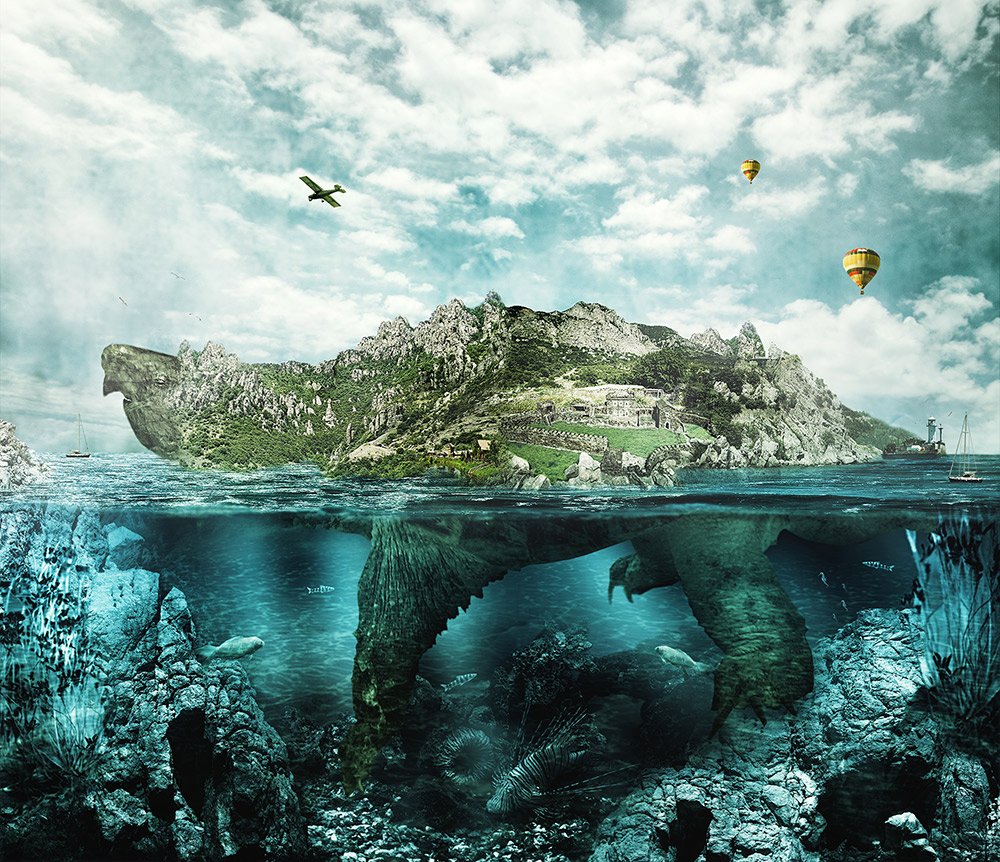
Let me give you a little context and my personal ethos.
My father was an immigrant from Chihuahua, Mexico. My mother is a full blood Kiowa/Cherokee from Oklahoma, United States. I am a product of intertribal, multicultural, transnational, and hyper local tribal histories. Oklahoma was once known as Indian Territory and became the world's largest Prisoner of War camp. Chihuahua was once home to 200 tribes before Spanish conquistadors committed genocide to mine silver from the region's mountains.
When I look south of the American border, I remember being five years old and running into the Chihuahua mountains with my cousins to shoot homemade slingshots. I also remember the Indigenous phenotypes of Indigenous ancestors in my cousin's faces. Having been raised in Oklahoma primarily with my Kiowa and Cherokee people, my perspective has always been an Indigenous one--even before I knew the meaning of the word. I rightly assumed all my cousins in Mexico were Indigenous like myself, since we had the same brown skin, narrow eyes, and black hair. The truth expounded by innocence is always convoluted by fragile adults seeking power over people.
The Náhuatl Language in México: http://www.houstonculture.org/mexico/nahuatl.html
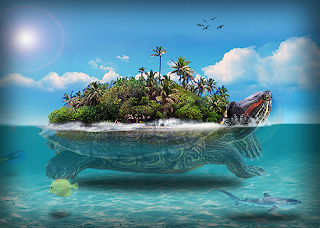
I grew up attending traditional powwows with Kiowa and Comanche people in southern Oklahoma, dancing with my family, wearing bright regalia made by my mother's and aunt's hands. In my youth, we "lived" at the powwow grounds for days at a time. Camping in a tent was as common as sleeping in my bed. While I was one of a few Kiowas with Mexican heritage, we all had the same phenotypes. I didn't look any different from my family, and certainly wasn't treated differently.
Because in my youth I had experiences in Chihuahua, Mexico and experiences in Oklahoma, United States, as an adult the border between Mexico and the U.S. seems arbitrary. Drawn by power seekers and maintained, physically and psychologically, to keep Indigenous people from acknowledging our commonality. Which begs the question, why are colonizers so afraid of Indigenous people allying with each other across Turtle Island?
I'm reminded of the various tribal confederacies in North America who once attempted to unify Indigenous people, and the most famous in the U.S. was Tecumseh's Confederacy (Chief Tecumseh Urges Native Americans to Unite), which ultimately lead to siding with European allies in the struggle for retaining control of traditional lands. Similarly, there were alliances on the Southern Plains of North America, where Kiowas allied with Comanches and held back westward expansion for 100 years (Oklahoma Historical Society). Once they extended their alliance to include the Cheyenne and Arapaho tribes, a confederacy of Indigenous tribes dominated the Southern Plains of North America.
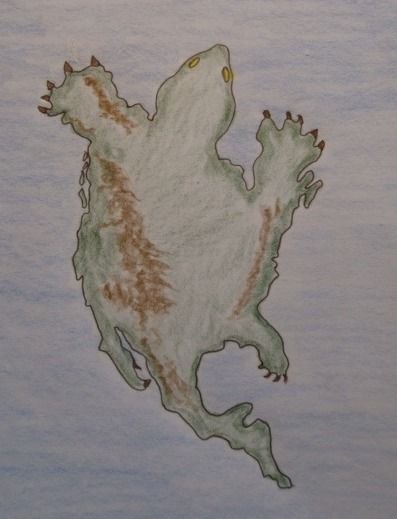
Needless to say, the circumstances that drove Indigenous people in the past are radically different than our need to unify today. Where land base was a primary mode of those alliances, today we are tasked with protecting not only a way of life but more importantly how that way of life is inextricably tied to land based practices. Moreover, to stand against the contamination of earth, air, and water--the three elements needed for human survival. Our plight to unify isn't strictly for the benefit of Indigenous peoples, but for all people to survive and live healthy lives. The environmental war being waged against Indigenous people in Canada is the same war being waged against Indigenous people in Mexico. Whether we're looking north or south, we, as Indigenous people in the United States, have allies in both directions. Why would we limit ourselves to myopic, hyper local identities? Because of a language barrier? Our ancestors developed sign languages to navigate dozens of tribal languages. So we can't beat one colonial language? We're as smart as our ancestors and have the intelligence to know how outdated people lock themselves into identities based in violence. We're smart enough to unfollow and unfriend and silence those seeking to keep Indigenous people from unifying. Outdated practices will only serve to keep Indigenous people fighting with each other, where neo-tribal politics can see the unifying history--how Native people were not only forced to flee into Canada, but to also flee into Mexico.
And now it's time for a return.
(Images were borrowed from The Canadian Encyclopedia, Pinterest, and Facebook.)
For Literary Eyes Only: Budding Archetypes for the Native American Literary Tradition
I'm open minded and enjoy talking to people about their Native ancestry. Folks get comfortable with me when they know I'm not going to judge them for admiring Native people, so they share their family lore. If they're writers, they'll likely mention a project they're working on where they have characters who are Native. Out of respect, they'll ask, "Can you make sure I'm not doing anything offensive?" and ask me to read their work. If I have time in my schedule, I'll gladly do so, but I've been busier than usual over the last year and haven't been able. This is part of the reason why I wanted to construct this list. This article is a serious examination of character archetypes for the purpose of creating literature. A unique approach situated from a Native lens.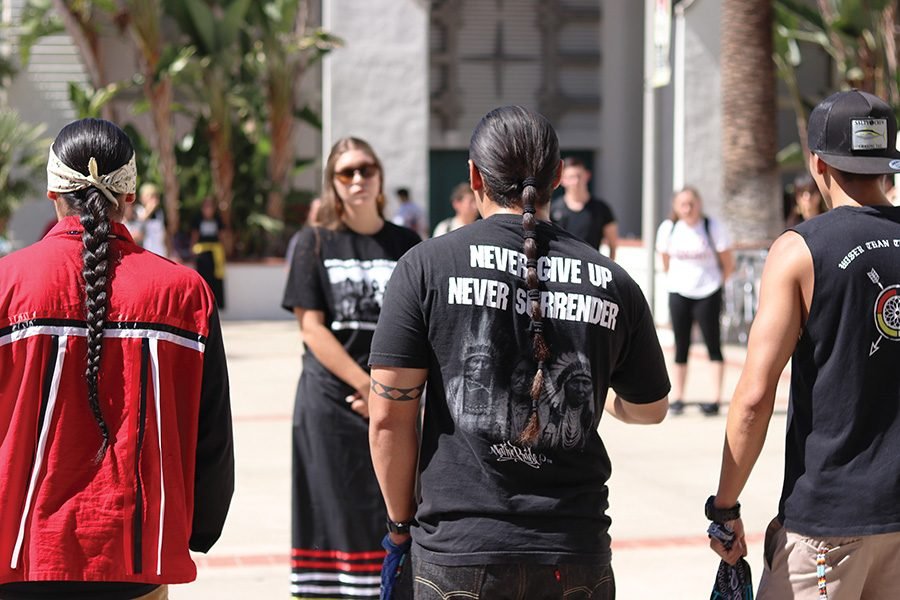 I like reading Native characters in books, and I'm often surprised when one comes up because usually it only happens in books that are specifically about Native people. So when I'm reading an adult fiction book outside that context I don't expect Native characters to arise. As you can tell by this article, I don't have qualms about non-Native writers writing Native characters. I draw the line at exploitation. Meaning, don't pretend to be Native and try to take awards, resources, and space from aspiring Native writers (stealing from the smallest minority in the U.S. is disturbing, and we have the highest disparity rates so it's harmful). The solution is simple: Write as an ally. Everyone wins.I say exercise your creative muscles and write a character who is Native. All writers take a risk when we "create" our characters, especially those who are not our own gender, race, class, or sexual orientation. Which is, more often than folks realize, every time we sit down to write. My line of thinking falls in line with Zadie Smith, who wrote a succinct and brilliant article about the subject, "Fascinated to Presume: In Defense of Fiction." I highly recommend you seek out her article in The New York Review of Books before you presumptuously make uneducated remarks in the comments section below.Another reason I'm motivated to create this list of archetypes has to do with Native literature itself (and I'm not going to get into the debate about "Native Lit" as a category or not--I think having our own category keeps the exploiters in check). The growing number of Native people writing literature has grown exponentially over the last decade. More and more of us are ready to step up and fill this "unmet demand" for Native American Literature. Readers are fascinated by our unique experience, and I feel they are seeking to "remake" their identity, or reconstruct it into one that's less destructive. I'd like to offer readers the opportunity to reflect on their identity by engaging with our own. And if I can do my part to make the world a less hostile place, then I've done something beneficial for not only my children but future generations, who are tasked with one choice: carry our trauma or carry our healing.
I like reading Native characters in books, and I'm often surprised when one comes up because usually it only happens in books that are specifically about Native people. So when I'm reading an adult fiction book outside that context I don't expect Native characters to arise. As you can tell by this article, I don't have qualms about non-Native writers writing Native characters. I draw the line at exploitation. Meaning, don't pretend to be Native and try to take awards, resources, and space from aspiring Native writers (stealing from the smallest minority in the U.S. is disturbing, and we have the highest disparity rates so it's harmful). The solution is simple: Write as an ally. Everyone wins.I say exercise your creative muscles and write a character who is Native. All writers take a risk when we "create" our characters, especially those who are not our own gender, race, class, or sexual orientation. Which is, more often than folks realize, every time we sit down to write. My line of thinking falls in line with Zadie Smith, who wrote a succinct and brilliant article about the subject, "Fascinated to Presume: In Defense of Fiction." I highly recommend you seek out her article in The New York Review of Books before you presumptuously make uneducated remarks in the comments section below.Another reason I'm motivated to create this list of archetypes has to do with Native literature itself (and I'm not going to get into the debate about "Native Lit" as a category or not--I think having our own category keeps the exploiters in check). The growing number of Native people writing literature has grown exponentially over the last decade. More and more of us are ready to step up and fill this "unmet demand" for Native American Literature. Readers are fascinated by our unique experience, and I feel they are seeking to "remake" their identity, or reconstruct it into one that's less destructive. I'd like to offer readers the opportunity to reflect on their identity by engaging with our own. And if I can do my part to make the world a less hostile place, then I've done something beneficial for not only my children but future generations, who are tasked with one choice: carry our trauma or carry our healing.
Mixed Blood In'din
I'm going to start with this one because I fall into this category and can speak to it quite effectively, lol. You'll see this archetype in just about every book written by a Native author. The most recent is Tommy Orange's novel, There There. I highly recommend picking up this book for a contemporary examination of mixed blood heritage in an urban American environment. It hits the mark in every way. But there are a number of writers who speak to a mixed heritage motif, such as Louise Erdrich, Brandon Hobson, and Susan Power. All of whom I would recommend.So what should we consider when writing a Native character of mixed heritage. From personal experience, being half Native and half Latinx, I've not had the self-hatred for being mixed, but that's a popular way of presenting this identity. It's true that mixed bloods often run into discrimination for "not being In'din enough," but I've run into the romanticization for being half Latinx more often than the discrimination. Often I'm seen as an anomaly and people are fascinated by the story of my Kiowa/Cherokee mother, who is from Oklahoma, United States, meeting my father, who immigrated from Chihuahua, Mexico. Typically, people want to know more.I'm only one of a very few Natives from my generation who are half Latinx. I'll say this, though. I live in Tahlequah, Oklahoma (in the heart of Cherokee Nation and work for Cherokee Nation) and there are many Mexican people who have married into Cherokee communities. I work with Indian Child Welfare and I can say undoubtedly that the next generation of Cherokees will have a high number of citizens who are part Mexican.As you'll read in many contemporary stories and many personal narratives online the mixed blood or half blood narrative is one wrought with postmodern dysphoria. Because of being constantly misidentified, people begin to look in the mirror and become dysphoric about what they see. This is where the self-loathing comes in. There seems to be an inability to "own" the diversity in ones lineage so this leads to confusion. The mix blood will suppress and even ignore the part of themselves that is White, Black, Mexican, etc. and instead attempt to only claim Native ancestry. As you can presume, this creates a host of issues, such as becoming over righteous or asserting themselves as an Indian "expert." In this modern era, your character might always try to be seen with full bloods or take pictures with full bloods to post on social media. There's a subconscious desire to be included as a "full blood" by association.
Super In'din
On the surface, this sounds like someone who might be a champion for Native communities. And I'm sure if you asked this guy he'd agree with you, lol. But the "Super In'din" is someone who weaponizes culture. This would be someone who considers himself an "expert" on his culture but he's not truly holding culture the way an elder might hold it. Meaning, he's not trying to pass on his knowledge and wisdom to the next generation. He's more interested in the power his knowledge holds. For character development, it might be better to view this person as a "gatekeeper" rather than an elder.In order to write this character, you're going to need some tribally specific knowledge for him to throw around. And I keep using the gender "he/him" because typically this is a male character--not to say the character couldn't be female, but typically this type of weaponized ego is a patriarchal trait. The most common behavior of a Super In'din is to shame people. So your character could criticize other characters for saying a word wrong or maybe wearing regalia in the wrong way. Your character will have a snobbish demeanor about him and think he's better than everyone. The only time you'll see him submit is when an elder walks into the room. Then he'll cower to the person who holds a more "respectable" way of carrying cultural knowledge.Ultimately, the Super In'din does more damage to his tribal community than he does good. It's better to see him as an extension of the colonizer. Meaning, he's oppressing his own people and doing the dirty work for the colonizer, like a pet. This is how a colonizer has reach into the center of a tribal community. The Super In'din is the colonizer's only way to penetrate the center. Otherwise, a tribal community would be able to heal internally if these individuals didn't exist. But where there is opportunity for power, people will play. So the Super In'din shames and humiliates his own people at every turn for self-fulfillment (hyper individualism).
Born Again In'din
The Born Again In'din could be confused with the Super In'din but there is a major distinction. The Born Again In'din wants to share her knowledge--not weaponize it. So this character will come into tribal culture at a time in their lives when they needed healing. Many recovering addicts become Born Again In'dins, especially if they start attending Native American Church (NAC) as a part of their recovery, which is common. But the Born Again In'din can also be an urban Native who comes to the reservation and gets swept away in learning tribal culture. In about a year, the urban Native will think they're more Native than the reservation Natives, if we're going to use cultural knowledge as a measuring stick.Your character will be overly excited to talk about cultural practices, like speaking the language. They'll start volunteering to say prayers at events. They want to show people how "In'din" they are. This is different than the Super In'din. It's better to see the Born Again as almost evangelical. They're not trying to convert people, but they hold tribal knowledge in such high esteem that they are certain it's going to help others.Here are two common everyday comparisons: If you had a friend who started martial arts and then became completely immersed to the point where all they talked about was martial arts, or if a friend started a new job that was interesting and new and they seemed to only talk about work. This is a similar pattern for the Born Again In'din.To capture this character effectively, you'll also need to have some cultural knowledge, but this person will know everything there is to know about medicinal plants in a specific region. So they'll say things like, "There's a cave outside Pumpkin Hallow where mushrooms grow just right," and they'll proceed to tell you at what phase of the moon when you should harvest said mushrooms. They know their medicinal roots and how to turn them into medicine. Also, they'll be in the process of learning the language. In fact, that's where they'll start. They'll be gungho about tribal language and use it as often as they can. This is where the Super In'din can shame the Born Again by constantly pointing out where their wrong, which can be often because they are in effect "students" of their own culture and are trying to gain more knowledge.The fruition of this character usually happens in one of two ways. They can become like the Super In'din themselves and start shaming other Natives. Or they can become a "savior" type and espouse wisdom to help the community.
Activist In'din
The Activist In'din has garnered some new attention with the rise of the #NODAPL movement, and now we have numerous protests around the world where protectors are standing up for ecosystems. But this archetype began in the 1970s with the rise of the American Indian Movement (AIM). In fact, AIM has maintained its presence since those early years and are the foundation for this current wave of activists. If not for AIM, then the current identity of "eco protectors" would not exist.Activist In'dins are our elite intellectual fighting force. It's better to see them as being more like a special forces unit, like Seal Team Six of the U.S. Navy. In fact, many of its members are veterans. If you're writing one of these characters, you're not going to see them very often. You might hear about them. But they are always serving as a protector at one of the many protests. They'll engage fully at one movement and when the protest is dismantled, then they'll move to another. In the flux, this character might show up in one of your stories, unless your story is about a specific protest. But when they show up, they'll be there for only a short time before they're off to the next eco protest.Behaviorally, your character will know the legal system. Activist In'dins have been arrested dozens if not hundreds of times, depending on their age, and can name their rights at the drop of a hat. Similarly, they'll introduce themselves as a Prisoner of War, saying, "My name is Oscar Hokeah, Gkoi'gkoo/Tsa'la'gi, slave/prisoner of Indian Territory/Oklahoma forcibly relocated by the Medicine Lodge Treaty of 1867 and the Treaty of New Echota of 1835." Not only are they historians but experts on specific treaties that affected their tribe.You can draw your characters as having a military type of personality. If you've had relatives in the military, then you can borrow from their demeanor. They tend to be very serious and ready to argue. Many of these individuals come from Law School and will spend a period of their young life at protests before they move on to budding careers as tribal lawyers. I'd describe these characters as being ready to serve. If you need something done, your Activist In'din character will be the first to volunteer to do it.
Hipster In'din
I saved the best for last. The Hipster In'din is the newest archetype and started showing itself about ten years ago. Image became god with the rise of social media, and these guys love themselves more than their mommas ever could. Lol, I'm teasing. Kinda. But the Hipster In'din is very concerned about trends and will jump onto the latest. If the trend is a Native protest against a pipeline, then they'll routinely post their personal opinions on social media. As soon as the trend changes to the protest of a mountain, so will their tweets. These guys are selling a product and that product is themselves. But this archetype is a global archetype so we all know someone like this. I'm just putting this into a Native context.Behaviorally, the latest trend is to be cynical so cynicism is the language of the Hipster In'din, but it's a special brand of cynicism. First you have to say something very sincere and when real human emotions surface you stuff them back down with a cynical comment, like, "Trump wants to start a race war, but at least I have my coffee," and then laugh. Your Hipster In'din character will need to be seen at trendy locations or trendy events. It'll all come through via social media. The major distinction will be the need to hold a certain "image." And the clothes will match the cynical language.The Hipster In'din character will carry themselves like they don't really care about anything or they are so disconnected that no one can hurt them. They are too cool to care. It can come off as arrogant, but it's an arrogance that's not fooling anyone. Other people in your story will be able to see it as a protective quality. The cynicism and arrogance is a way to hide from the pain of the world. Which will in turn make them appear to be even more fragile than if they were genuine.
Closing Thoughts
The above archetypes are found not only in contemporary Native American literature but also in modern Native society. They are the budding archetypes of our generation. My intention behind the list is to offer Native writers and non-Native writers character traits when developing their storylines. Discussions about literary archetypes, such as the hero, the villain, and the victim are common in literary classrooms, but we writers also consider the birth of new societal archetypes, such as the jock, the prom queen, and the nerd, which are then transferred into literary devices for writers. In the same vein, I offer the above archetypes as a nuanced approach to the literary tradition.
(Image borrowed from The Daily Aztec)
A Call to Gurus
This article is a confession to my gurus. Well, maybe more of an apology. Or a humble request for forgiveness. Okay, it's a mixture of all three. Sometimes I can be an asshole. More so when I was younger and before life kicked my sorry brown ass into submission. People say they love writers who have had the life beaten out of them. That'll be my remaining solace in this whole matter: I'm only likable after bruises on the side of the face and a gash near the hairline.
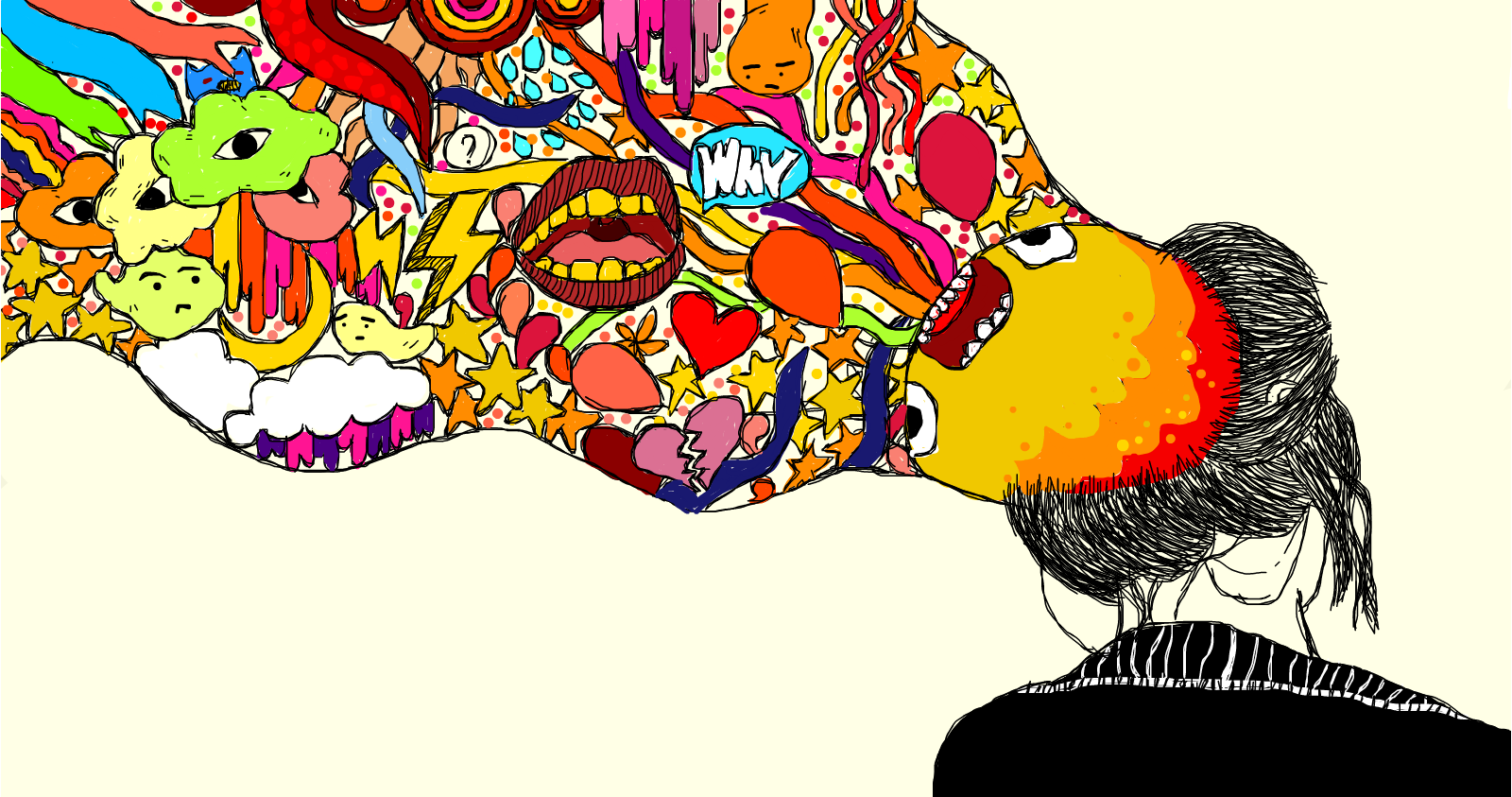
I was eight years old when I got into my first major argument with a teacher. I could've been seven, but I was young. In elementary school. What was the argument about? Or what passion could be evoked in an eight year old child that would set him off? It wasn't the obvious, like video games, food, or toys. It was spiders. Yup, the whole argument was about spiders. My stance was that spiders were evil. Yes, evil. My teacher kindly tried to enlighten me about the role of spiders in the cosmos. But I wouldn't hear it! "No! Spiders are evil!" I told her. And thus began my attack on gurus.
I'm a peace loving person, despite what we've seen so far from my eight-year-old self's stance on spiders (and, interestingly enough, my childhood nickname was Spider and family on my Kiowa side still call me Spider).
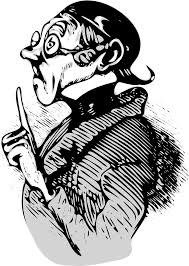 But when it came to teachers I've always had an odd and subtle defiance. But before we get too far into this business, you'll want to know what triggered me to write this article. I had an email exchange with someone who rightly pointed that I needed to make things right, that I had a history, going back lifetimes, where I insulted teachers and this was hurting my ability to grow as a person. There was nothing I could say in return. She was right. She hit the proverbial nail on the head, leaving me speechless.
But when it came to teachers I've always had an odd and subtle defiance. But before we get too far into this business, you'll want to know what triggered me to write this article. I had an email exchange with someone who rightly pointed that I needed to make things right, that I had a history, going back lifetimes, where I insulted teachers and this was hurting my ability to grow as a person. There was nothing I could say in return. She was right. She hit the proverbial nail on the head, leaving me speechless.
This has extended into my adulthood and it runs so subconsciously that I recently inserted an attack on a teacher in a recent article: From Tommy Orange to the Institute of American Indian Arts: Plains Tribes Battle for “Powwow” Terminology in Contemporary America. What's wrong with me? I didn't name any names and wouldn't anyway, but to see this play out as recently as last week is astonishing.
“I am not a teacher, but an awakener.” -- Robert Frost
Certainly, while I was at the Institute of American Indian Arts I was a pain in the ass. My professors are nice to me about it all. I was young and they're forgiving (thankfully). But this affected me to such a degree that this morning I started emailing all my old instructors. One after the other. I told them how much I appreciated their guidance and apologized for being an idiot. Time is the best teacher of all, and time says to appreciate people while they're in front of me. But yes, I emailed numerous teachers this morning. All but one has emailed back so far, and each were appreciative that I reached out (some I hadn't spoken to in nearly a decade).
“Teaching is the greatest act of optimism.” -- Colleen Wilcox
I wish I could find all the teachers I transgressed (and yes it was that many). If push comes to shove, I will. But I figured at minimum I should contact the ones I still had access to and then write this article. Let's call it a start. No one is perfect, certainly, and likely my missteps may have not been to a severe degree, but ultimately that's not up to me to decide. I transgressed and I should apologize. Simple, straightforward, and honest. I know it's not okay (no matter how I justified the actions). Teachers put their wisdom on the line when they offer guidance to their students. So I shouldn't have been so callous.
Support a Native owned Etsy shop, Allies United, where I offer unique merch for allies of social justice movements, like MMIW, Native Lives Matter and Black Lives Matter. Take a look inside my Etsy shop here: etsy.com/shop/AlliesUnited.
How to Smudge with Sage & Native American Customs for Prayer
I've had several people inquire about practices and customs associated with smudging. I decided to cleanse myself today so I thought I'd make a short video on rituals I've learned over the years. This is by no means anything dogmatic. These are just methods that I've learned over the years. I'm Kiowa and Cherokee, and I've incorporated practices between both cultures and lessons I've learned personally through doing this routinely that work for me.I hope you enjoy the video. Please feel free to share with as many folks as you like, and if you have questions reach out to me in the comments. Wa'do, have a blessed day, and if you're interested in Native American fiction please support my debut novel, CALLING FOR A BLANKET DANCE: Bookshop, Amazon, B&N, IndieBound.https://www.youtube.com/watch?v=Z3GGFIfJY0Q
Underground Matriarchy: #WIP Debut Novel "Unsettled Between"
We've heard the reified stories of men brutalizing men. A rehearsal of patriarchy. In fact, hyper masculine bullshit permeates our lives. We see in the media, if not in our daily lives, the ramifications of patriarchy unchecked. So what's the answer? Men are being called out now more than ever and violence continues. Wars haven't stopped. We hear about a mass shooting in the U.S. almost everyday. In my debut novel, Unsettled Between, Ever Geimausaddle faces his own brutality with the help of an underground matriarchy.
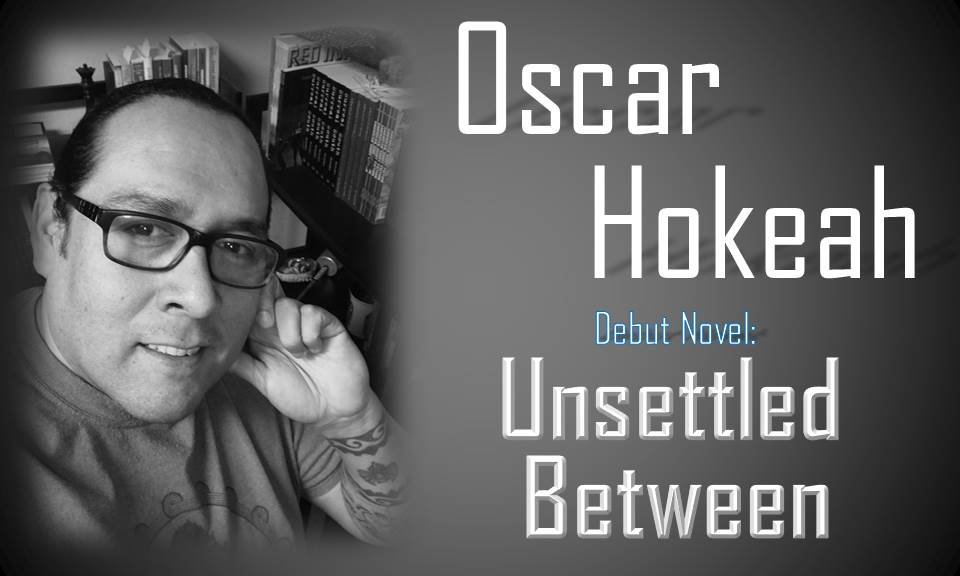
There are subcultures who maintain the values of matriarchy throughout the U.S. I'll speak here about tribal matriarchy because my experiences are based in Cherokee and Kiowa communities and culture. I'm also fortunate to belong to a family of matriarchs, where women in our family make the major decisions and delegate responsibilities.
"Our mothers echoed words they had echoed before—this time we listened. 'Being Kiowa will forever be about how we dance together.' Seemed like, being sisters, those words were a song that made them family, but more important: it made all Kiowas come together." -- Unsettled Between
Ever Geimausaddle finds himself being witness to brutality and subjected to abuse, where he develops deeply aggressive behavior. We also see this occur often in poor and disparagged communities. Ever's circumstances are no different. He encounters numerous examples of violence and domineering masculine attitudes, whether it's violence handed down from his father or colonial violence handed down from a history of conflict.
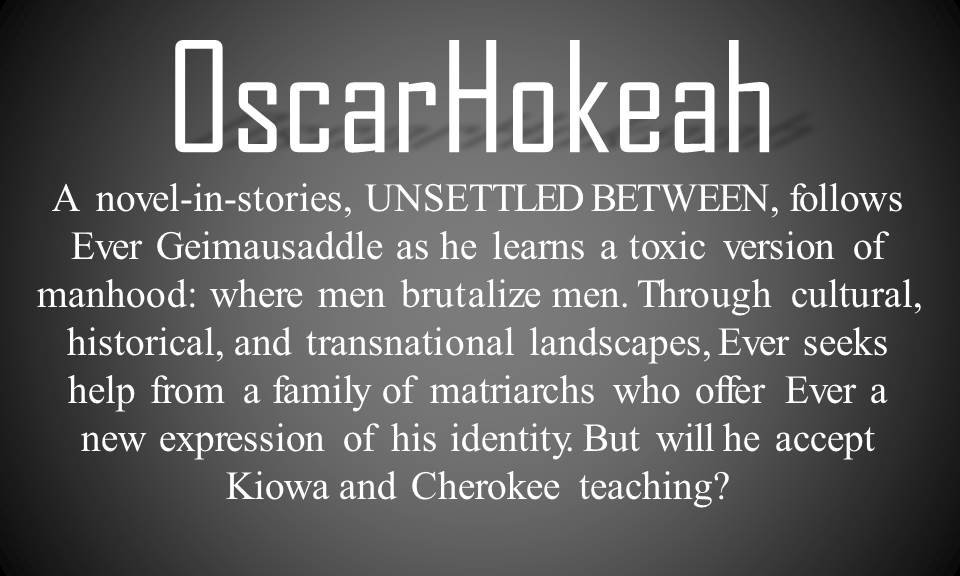
How does Ever handle these challenges? Better yet, how do the matriarchs in his family direct him? Moreover, are there matriarchal males present in his family to be role models?
"I ran into the living room, calling for my mother—ready to tattle, tell, and cry—but there was an old man sitting on the couch. He held this heavy coffee colored cane at his side. His skin had the texture of a turtle’s hide. His jaw seemed to hang lower than normal. My mother was at the store, he told me, introduced himself as an uncle, he claimed, a Bird Clan member, someone distant but a relative." -- Unsettled Between
At the end of the day, issues revolving around this current version of patriarchy needs to also be addressed by men. We, men, need to understand and then purge the violence we're trained to rehearse. Those of us who are more progressive, or who are willing to change, understand the ultimate self-destructiveness hyper masculine constructs bring.
"We were known as messengers. Cherokees depended on the Bird Clan to care for children who delivered original instructions between the spirit and material worlds. Bird Clan mothers protected birds in practical and ceremonial ways." -- Unsettled Between
Ever Geimausaddle was born into violence, rehearses violence, but he doesn't have to perpetuate violence to the next generation. In fact, if he can learn the lessons from the matriarchs in his family, he could potentially become the answer his tribal communities need: a male standing against patriarchy.
Support a Native owned Etsy shop, Allies United, where I offer unique merch for allies of social justice movements, like MMIW, Native Lives Matter and Black Lives Matter. Take a look inside my Etsy shop here: etsy.com/shop/AlliesUnited.
Underling Mentality in "The Smurfs:" Why Azrael Allows Himself to be Abused by Gargamel
No one believes themselves to be like Azrael. If we had to choose between the cat and Gargamel, we'd all choose Gargamel--if push came to shove. We'd rather be neither, or think of ourselves as neither. But we're one or the other in someone's eyes. This article is an examination of how the "underling" can allow himself to be abused. And maybe we can resolve: Why we allow people in power to control us.
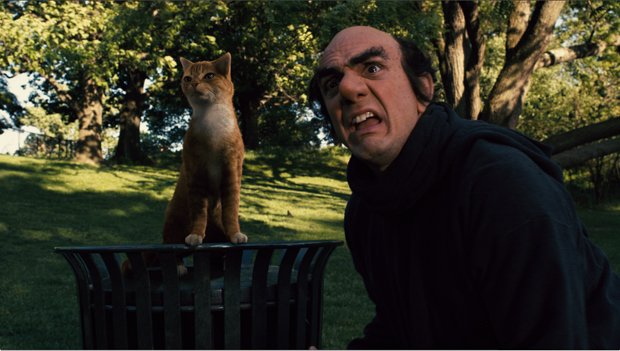
Look around your office. Assess a hierarchy. Who is running the show? Who is the underling? To discover the underling, identify the person who gets in hot water the most. Underlings always receive more abuse. They will throw themselves into a pit of wild boars just to appease their master.
There is always a discerning quality to the person "running the show." They never get in trouble. They send their underlings out to do the dirty work. So the underlings are the ones who get attacked, receive blame, and punished. Meanwhile, their master sits over there as comfy as can be, living life without a worry in the world.
"Often in codependent relationships, one partner – sometimes an addict, narcissist, or abuser – wields power over the other." -- Darlene Lancer, JD, MFT
I worked in a group home setting for six years and the staff were trained to identify who was the leader, so as to identify who was truly causing the others to act out. It was always the one who never got in trouble. He made underhanded comments, which propelled the others to become violent. As soon as we identified who caused the issue and pointed out to the residents how they were manipulated, all of a sudden the violence went down.
We're all asking: How can someone have such little self-respect that they allow themselves to be abused and manipulated?
I'm not going into the details of that deep psychosis. Neither of us have that kind of time. But we can use a movie like The Smurfs to quickly deduce a type of reward system. In The Smurfs movie, Azrael wants to eat a Smurf. Likewise, Gargamel wants to capture the Smurfs to drain them of their power and use the power for himself. This very simple structural technique quickly points to a human condition to band together with someone for a common goal.
"The power paradox requires that we be ever vigilant against the corruptive influences of power and its ability to distort the way we see ourselves and treat others." -- Dacher Keltner in The Power Paradox
Azrael will laugh at Gargamel when The Smurfs make Gargamel look like a fool, and in some of the cartoon episodes Azrael turns against Gargamel. But ultimately, Azrael allows Gargamel to treat him terribly and abuse him, whether physical or verbally.
Now take a look around your office again. Who acts like an Azrael? Now, who is their Gargamel? How does the Azrael subject themselves to abuse? Do they get insulted? Does the Azrael do things that will potentially get themselves fired? How does the Gargamel provoke others to act? What is the Azrael's reward? Why would they allow themselves to be used?
~~~
If you enjoyed this article, support a Native author and order Oscar Hokeah’s debut novel, CALLING FOR A BLANKET DANCE: Bookshop, Barnes & Noble, Amazon, Target, Walmart, Books-A-Million, IndieBound
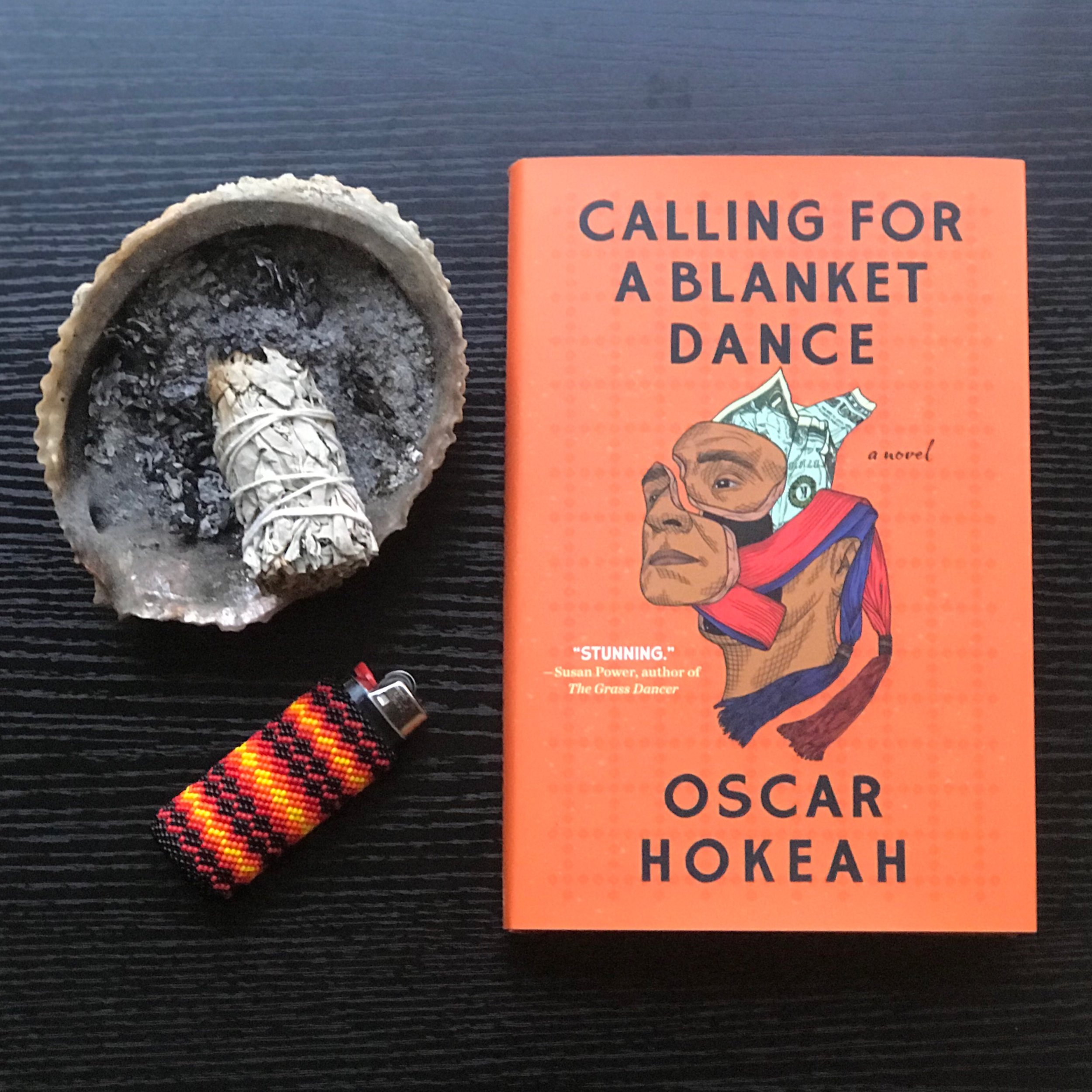
From the Edge of a Cliff to Under a Bus: Living Under the Dark Skinned Microscope
Have you ever felt like you were being watched? It's a creepy feeling. And then you look up to find someone staring. Your instincts picked up on the energy and you knew before looking that someone was watching you. When I encounter implicit bias, it has the same effect. I know when I'm being targeted with excess negative attention. I wonder why someone is so concerned about me in my life, when I have zero interest in theirs. The person comes off as creepy, and likely harbors underlying racist and sexist ideologies about dark skinned males. There are numerous articles on implicit bias so I'm not going into detail about how it works. The baseline: society, community, family low key trains us to look at individuals with biases. Dark skinned males are always assumed to be criminals so we are watched much closer. So much so, people keep watching until the slightest mistake occurs and then they attempt to blow it out of proportion. Fortunately, in my circumstances, the overreaction has been so blatantly noticeable it quickly becomes dismissible and the person looks like a psychopath.I'd like to write about the above mentioned pattern. This pattern isn't something typically covered by the "implicit bias" articles. It has to do with manifest destiny. Not the manifest destiny that came out of Europe centuries ago and massacred millions of Native Americans. But it is akin. If you believe it, it will come.What I've found in my personal life and work life are repeated, almost predictable, patterns where individuals will attempt to throw me under the bus. Meaning, they will find the smallest opportunity to try to get me in trouble with superiors. People believe dark skinned males to be criminal, but when we are more concerned with reading books rather than committing crimes then they subconsciously seek out ways to make us criminals.What happens? I have to stay within the lines more so than people around me. I can see people wasting entire days of time with school work or personal phone calls. But my entire day is tracked. I'll stand from my cubicle and someone will quickly ask, "Are you leaving?" I'll say, "No, I'm just going to the bathroom." If incidents like this happened in isolation, then I'd dismiss them. But I have consistently been asked arbitrary questions about what I'm doing. Then it's contrasted when no one else around me receives the same line of questioning. This has occurred throughout my entire working and academic career. Even my bathroom visits receive comments. I have to time my daily 15 minute breaks at work to be at the exact same time everyday, while other workers can spend hours gossiping. Those are just some examples of the many I face everyday when I walk out of my door.
There are numerous articles on implicit bias so I'm not going into detail about how it works. The baseline: society, community, family low key trains us to look at individuals with biases. Dark skinned males are always assumed to be criminals so we are watched much closer. So much so, people keep watching until the slightest mistake occurs and then they attempt to blow it out of proportion. Fortunately, in my circumstances, the overreaction has been so blatantly noticeable it quickly becomes dismissible and the person looks like a psychopath.I'd like to write about the above mentioned pattern. This pattern isn't something typically covered by the "implicit bias" articles. It has to do with manifest destiny. Not the manifest destiny that came out of Europe centuries ago and massacred millions of Native Americans. But it is akin. If you believe it, it will come.What I've found in my personal life and work life are repeated, almost predictable, patterns where individuals will attempt to throw me under the bus. Meaning, they will find the smallest opportunity to try to get me in trouble with superiors. People believe dark skinned males to be criminal, but when we are more concerned with reading books rather than committing crimes then they subconsciously seek out ways to make us criminals.What happens? I have to stay within the lines more so than people around me. I can see people wasting entire days of time with school work or personal phone calls. But my entire day is tracked. I'll stand from my cubicle and someone will quickly ask, "Are you leaving?" I'll say, "No, I'm just going to the bathroom." If incidents like this happened in isolation, then I'd dismiss them. But I have consistently been asked arbitrary questions about what I'm doing. Then it's contrasted when no one else around me receives the same line of questioning. This has occurred throughout my entire working and academic career. Even my bathroom visits receive comments. I have to time my daily 15 minute breaks at work to be at the exact same time everyday, while other workers can spend hours gossiping. Those are just some examples of the many I face everyday when I walk out of my door.
It has to do with manifest destiny. Not the manifest destiny that came out of Europe centuries ago and massacred millions of Native Americans. But it is akin. If you believe it, it will come.
Ultimately, it has given me a stronger work ethic. When everyone is trying to turn you into something you're not, you become more of who you really are. I'm a work horse. Dependable. And focused. I show up for my kids. I'm proud to be a nurturing father. At the end of the day, my children and my family are the reasons I stay the course. Implicit bias isn't going fade away because we are aware. Most institutions where I've worked and attended for my education have trained staff and students on implicit bias. For a few months afterwards, I get less monitoring and harassment. But after time passes, it always starts back up again. Like taking care of my family isn't enough, I also get the pleasure of walking the edges of a cliff.
Chaotic Resonance of the Echo Chamber
We're tweeting and sharing and posting. We touch on a politically sensitive subject. And we don't hesitate to engage in a friendly dialogue amongst community members. This is how folks learn. The back and forth sway. As we all know, a simple text exchange can quickly turn a meal of delicacies into a food fight.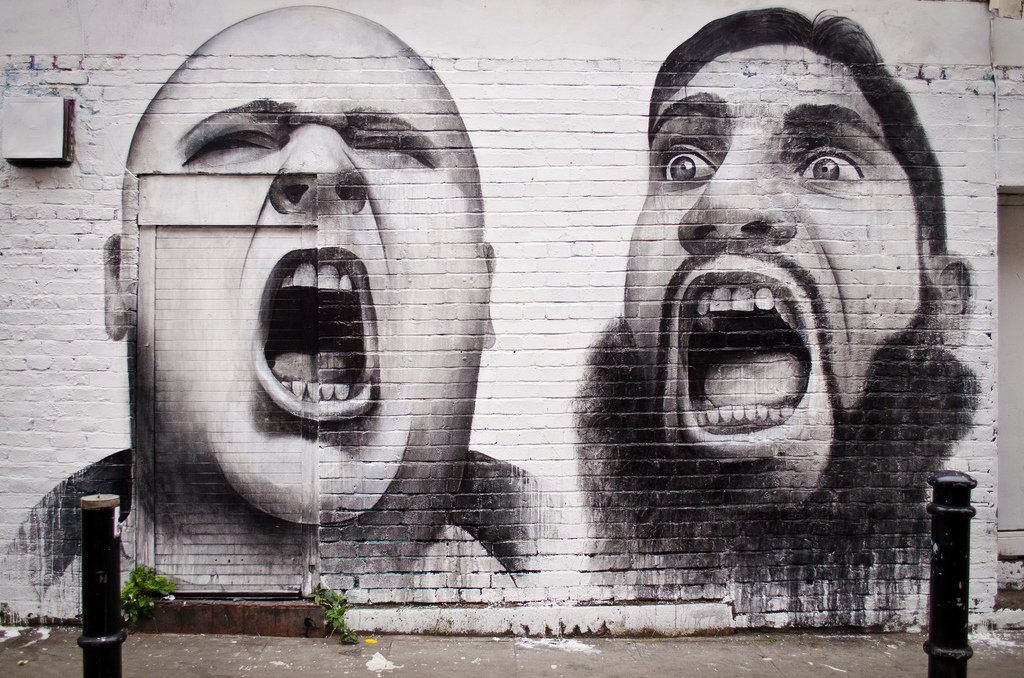 How do you handle these situations? People can get defensive and hurl insults and redirect the conversation to be something personal. Maybe the person was having a bad day and was ready to conflict with anyone, and you happened to be at the wrong place at the wrong time. Or maybe you unknowingly overstepped a boundary. Either way, an issue was created. Then we must determine: Is this salvageable? Or do we part ways?Social media allows us to develop online allies who echo our sentiment, but our allies might not share the same ideology so there can be conflict. Being an ally doesn't mean we're supposed to agree on every angle of an issue. We might agree on the issue, but the approach can be different. Allyship also doesn't mean people have license to verbally abuse someone. I don't get to attack you because you misunderstand a nuance within Native culture. And vise versa. You don't get to attack me for advocating for my tribal communities. It's a frail rope we walk, but one worth walking. And will pave a path for new methods in forming society. First, we must productively engage.Since social media disassociates physical proximity from verbalized ideology, how do you respond to issues of contention? Do you immediately block someone? Do you withhold your thoughts to save an argument? Do you ask someone to take a break from the exchange? Or do you repeatedly engage until either you or the other person grows tired enough to unfollow and block? How do you handle the chaotic resonance of the echo chamber?
How do you handle these situations? People can get defensive and hurl insults and redirect the conversation to be something personal. Maybe the person was having a bad day and was ready to conflict with anyone, and you happened to be at the wrong place at the wrong time. Or maybe you unknowingly overstepped a boundary. Either way, an issue was created. Then we must determine: Is this salvageable? Or do we part ways?Social media allows us to develop online allies who echo our sentiment, but our allies might not share the same ideology so there can be conflict. Being an ally doesn't mean we're supposed to agree on every angle of an issue. We might agree on the issue, but the approach can be different. Allyship also doesn't mean people have license to verbally abuse someone. I don't get to attack you because you misunderstand a nuance within Native culture. And vise versa. You don't get to attack me for advocating for my tribal communities. It's a frail rope we walk, but one worth walking. And will pave a path for new methods in forming society. First, we must productively engage.Since social media disassociates physical proximity from verbalized ideology, how do you respond to issues of contention? Do you immediately block someone? Do you withhold your thoughts to save an argument? Do you ask someone to take a break from the exchange? Or do you repeatedly engage until either you or the other person grows tired enough to unfollow and block? How do you handle the chaotic resonance of the echo chamber?
Support a Native owned Etsy shop, Allies United, where I offer unique merch for allies of social justice movements, like MMIW, Native Lives Matter and Black Lives Matter. Take a look inside my Etsy shop here: etsy.com/shop/AlliesUnited.
(Image above was borrowed from Flickr)
Reductive Discernment Between the Crabs in the Barrel and Fake In'dins
You've done the work. Wrote the story, painted the painting, soldered the jewelry, sculpted the clay, or weaved the basket. You've put in the hours at the workstation, lost yourself in the art, creating work unique and powerful and meant to contribute to a collective of voices echoing from generations past. Then you take the work into the world. Now it's time to dance with the "crabs in the barrel" and the "fake In'dins." It's a miracle when an artist makes it. So much so we have to celebrate each time it occurs. Just to sit back and think of all the obstacles that individual had to navigate to be successful is worth the admiration.Those of you who have consistently followed my blog and contributed in length to discussions are in for a ride. I'm going to give you a little insight into the Native art world. And some of it will sound familiar to your own circumstances, and then some of it you're going to scratch your head and try to figure out how and why.I've been in these circles a long time. I graduated with a Bachelors of Fine Arts in Creative Writing from the only Native Arts college in existence. The Institute of American Indian Arts is a unique institution which focuses on contemporary Native arts and is located in Santa Fe, New Mexico. It's churned out some of the greatest Native artists in the world. I'm lucky and grateful to have developed myself among so many Native intellectuals and artisans.To a certain extent, we were sheltered from a predatory art world. Maybe we needed to be sheltered so as to properly develop ourselves. I can see many strengths to developing in an isolated group of artists, so as to hone our skills before hitting a market that's symptomatic of pitfalls.Once we step into the arena, we encounter first the "crabs in the barrel," who are bent on never seeing another Native do well. This is the Natives against Natives idiocy that plays out. Instead of celebrating the talent of our fellow Natives, we are intimidated so we attack. We tear down those Natives around us, and the more talented or motivated the harder the attack. We can go after heritage association, by "How much In'din are you?," or "What family do you belong to?" And if that doesn't work, then we'll go after participation, as in "Do you even speak your language?" or "Have you been to a stomp dance?" We desperately reach and grab into the darkness for any and all cultural knowledge to weaponize and utilize to attack a fellow Native artist.
It's a miracle when an artist makes it. So much so we have to celebrate each time it occurs. Just to sit back and think of all the obstacles that individual had to navigate to be successful is worth the admiration.Those of you who have consistently followed my blog and contributed in length to discussions are in for a ride. I'm going to give you a little insight into the Native art world. And some of it will sound familiar to your own circumstances, and then some of it you're going to scratch your head and try to figure out how and why.I've been in these circles a long time. I graduated with a Bachelors of Fine Arts in Creative Writing from the only Native Arts college in existence. The Institute of American Indian Arts is a unique institution which focuses on contemporary Native arts and is located in Santa Fe, New Mexico. It's churned out some of the greatest Native artists in the world. I'm lucky and grateful to have developed myself among so many Native intellectuals and artisans.To a certain extent, we were sheltered from a predatory art world. Maybe we needed to be sheltered so as to properly develop ourselves. I can see many strengths to developing in an isolated group of artists, so as to hone our skills before hitting a market that's symptomatic of pitfalls.Once we step into the arena, we encounter first the "crabs in the barrel," who are bent on never seeing another Native do well. This is the Natives against Natives idiocy that plays out. Instead of celebrating the talent of our fellow Natives, we are intimidated so we attack. We tear down those Natives around us, and the more talented or motivated the harder the attack. We can go after heritage association, by "How much In'din are you?," or "What family do you belong to?" And if that doesn't work, then we'll go after participation, as in "Do you even speak your language?" or "Have you been to a stomp dance?" We desperately reach and grab into the darkness for any and all cultural knowledge to weaponize and utilize to attack a fellow Native artist.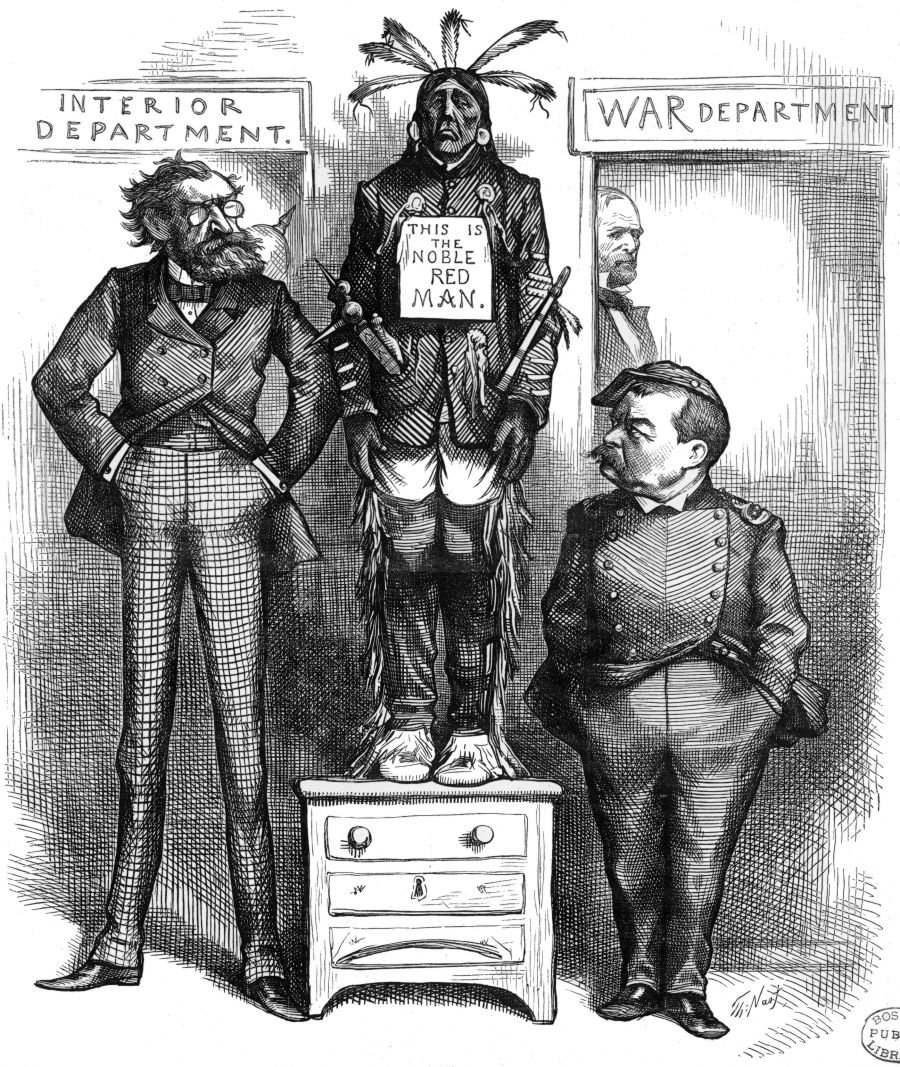 Then we have the "fake In'dins," who slither into our circles with false promises and outright lies. When I was at IAIA the first among this group I crossed was the infamous Joseph Boyden, who we all thought was Ojibwa, and nobody either knew otherwise or didn't tell us students otherwise. He certainly didn't tell us students otherwise. So where was his ethos? I assumed, "Hey, he's at a famous Native arts college and he's writing about Ojibwas, so he must be Ojibwa." IAIA wouldn't bring in a fake In'din? He was visiting the school and spent about a week on and off campus promoting his book. Then we find out he's not Native at all and he's won the Canadian equivalent of the Pulitzer Prize. More or less, he's taken an award out of a Canadian Native writer's hands.But what makes the situation hard for new and upcoming Native artists are the "fake In'dins" swimming in the shallows near the shore. When we first step into the real world arena, we often meet people, artists, who we can bond with because they are in the same boat--navigating the Native art scene. We believe they are Native because they say they are Native, and then at some point (often years down the line) we find out they are not Native at all. They have Native blood in their lineage but cannot prove it. Which in and of itself is fine, but if you are trying to capitalize off of it and put out what is to be considered "Native Art" then you are stealing from community born and raised Natives--stealing space, stealing awards, stealing time, stealing success. But we've seen this stealing before. It has been a consistent part of Native American history. It's adapted and changed faces, but it's all the same, and unfortunately we Natives must roll our eyes and say to ourselves, "Here we go again."Getting hit on both sides of the drum, a Native artist starts to see the "crabs in the barrel" and the "fake In'dins" as serving the same God. Ultimately they both keep down Native people. In a world that's already designed to suppress Native voices it makes it doubly difficult when the deception is woven with falsity and nicety. When fake In'dins try to butter you up with false promises--similar to what our ancestors encountered in the past--and crabs in the barrel who jump on our back to try and destroy any chance we have for success (while in the process attempting to gain success for themselves).Now tell me there's a difference.
Then we have the "fake In'dins," who slither into our circles with false promises and outright lies. When I was at IAIA the first among this group I crossed was the infamous Joseph Boyden, who we all thought was Ojibwa, and nobody either knew otherwise or didn't tell us students otherwise. He certainly didn't tell us students otherwise. So where was his ethos? I assumed, "Hey, he's at a famous Native arts college and he's writing about Ojibwas, so he must be Ojibwa." IAIA wouldn't bring in a fake In'din? He was visiting the school and spent about a week on and off campus promoting his book. Then we find out he's not Native at all and he's won the Canadian equivalent of the Pulitzer Prize. More or less, he's taken an award out of a Canadian Native writer's hands.But what makes the situation hard for new and upcoming Native artists are the "fake In'dins" swimming in the shallows near the shore. When we first step into the real world arena, we often meet people, artists, who we can bond with because they are in the same boat--navigating the Native art scene. We believe they are Native because they say they are Native, and then at some point (often years down the line) we find out they are not Native at all. They have Native blood in their lineage but cannot prove it. Which in and of itself is fine, but if you are trying to capitalize off of it and put out what is to be considered "Native Art" then you are stealing from community born and raised Natives--stealing space, stealing awards, stealing time, stealing success. But we've seen this stealing before. It has been a consistent part of Native American history. It's adapted and changed faces, but it's all the same, and unfortunately we Natives must roll our eyes and say to ourselves, "Here we go again."Getting hit on both sides of the drum, a Native artist starts to see the "crabs in the barrel" and the "fake In'dins" as serving the same God. Ultimately they both keep down Native people. In a world that's already designed to suppress Native voices it makes it doubly difficult when the deception is woven with falsity and nicety. When fake In'dins try to butter you up with false promises--similar to what our ancestors encountered in the past--and crabs in the barrel who jump on our back to try and destroy any chance we have for success (while in the process attempting to gain success for themselves).Now tell me there's a difference.
(Images used in this post were borrowed from Wikimedia Commons)
The Art of Reaction & Trusting Our Protectors
One of the beautiful behaviors of people is our need to protect. We don't like bullies. This becomes more the case the older we get. There is something about seeing someone being treated terrible that we can't stand. Maybe it's a new comer who is unjustly getting targeted, or it could be someone vulnerable who doesn't have the means to stand up for themselves. Either way, when you see opportunists attacking someone, you can be assured the protectors will come out if full force.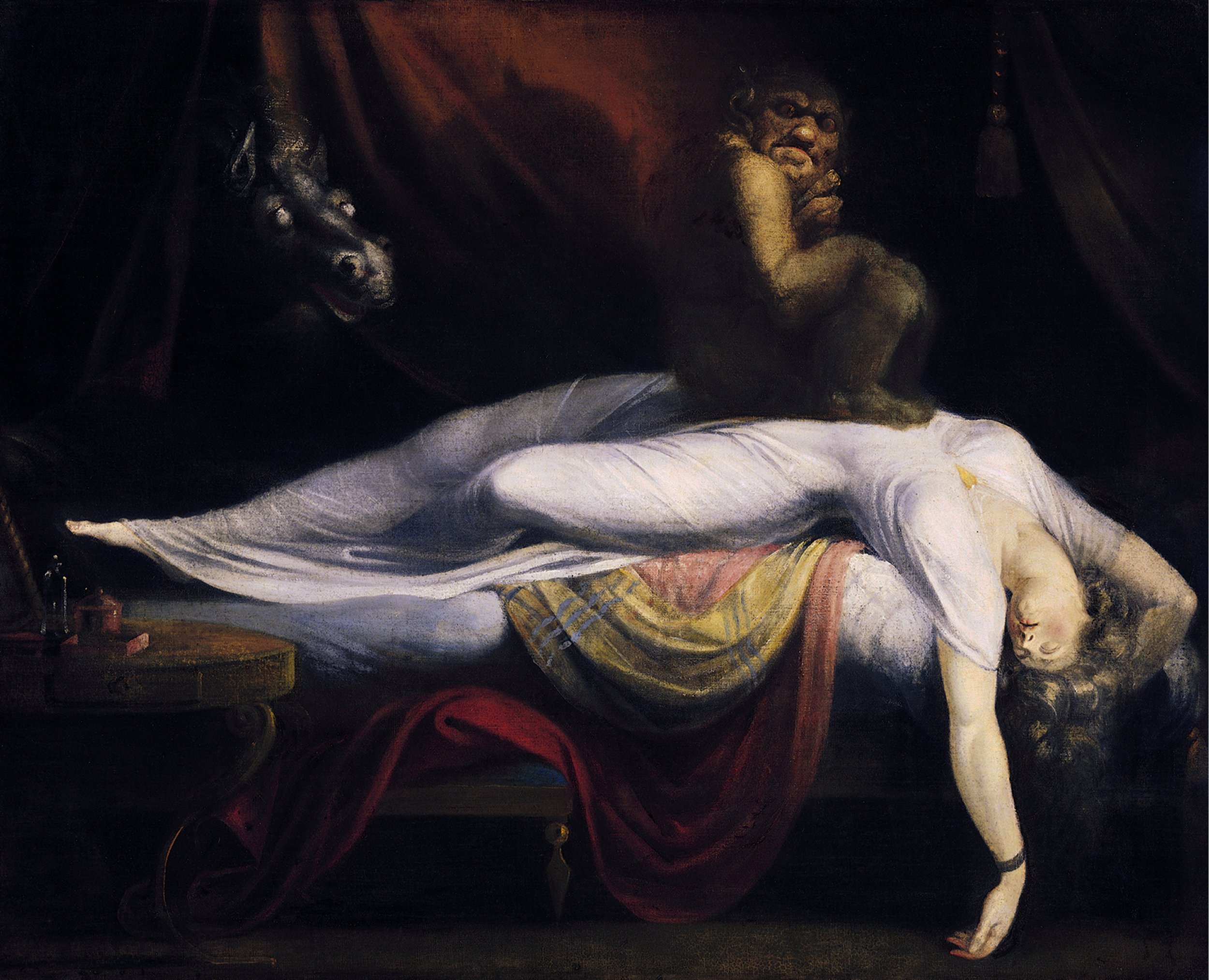 Those of us in the arts industry know all too well the backlash an artist can receive because of their popularity. Here you are doing your best work and putting all your energy into the art you are creating, and when it's time to showcase to the world what you've created, the bottom-feeders come out of the woodwork. They're like sharks sneaking up on you from small and unsuspecting places.Having been in and then out and then back in these environments I've learned a few things, and I'm going to give you a little insight on how to understand and work with the negative energy.
Those of us in the arts industry know all too well the backlash an artist can receive because of their popularity. Here you are doing your best work and putting all your energy into the art you are creating, and when it's time to showcase to the world what you've created, the bottom-feeders come out of the woodwork. They're like sharks sneaking up on you from small and unsuspecting places.Having been in and then out and then back in these environments I've learned a few things, and I'm going to give you a little insight on how to understand and work with the negative energy.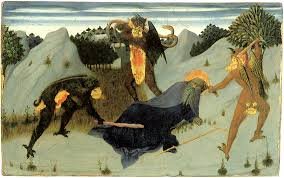 The first thing to understand is people are not going to stop. We can dream all day of the "what if" and how things "should be." There are people who gain energy from being positive and creating beautiful things, including beautiful relationships, and there are people who are energy vampires and they will attempt to use their negativity to tear you down. In fact, I'm sure there are bottom-feeders reading this post right now who can't wait to attack me for writing it.Here's the trick. Trust people to be who they are. If they're known for attacking people to build themselves up then they're always going to do so. Now, since you've picked out the bottom-feeders and you know how they are going to react, you can create your own reactions--not in a defensive tone but in a tone and advocacy for the positive things your doing. Just remind them and anyone listening of the good things your work is focused on. What will happen? One, they're not getting the negative response to feed themselves, and, two, you're giving people in your circles the opportunity to see the injustice. It'll show the clear avenue of negativity coming from the bottom-feeder.Next you'll start to see other people come to your defense. The protectors will step up and say, "She's doing good things for her people," in effect, and "She's trying to help," more or less. They're going to stand up for you. Why? Because you've helped them see the positive things you are doing. We have to remember: these bottom-feeders want people to only see the negativity. Everything they do will always come back to something ugly. They're incapable of doing it any other way. In response, we must be prepared to "show" and "describe" the positive aspects of our art. When the protectors can see, meaning visualize, how you are making your community better, then they are more willing to champion your cause.To a certain degree, exercising some savvy, you can set up these bottom-feeders for failure. Just keep putting yourself out there. At some point, they will attack you. Remember how I said, "Trust people to be who they are." Then when they do so. Take your opportunity to call the community to action. Remind them of the good you're doing and how you're bettering the community. It'll leave the bottom-feeders getting attacked for being so negative, and in the process you gain the solidarity the bottom-feeders are trying to disrupt.
The first thing to understand is people are not going to stop. We can dream all day of the "what if" and how things "should be." There are people who gain energy from being positive and creating beautiful things, including beautiful relationships, and there are people who are energy vampires and they will attempt to use their negativity to tear you down. In fact, I'm sure there are bottom-feeders reading this post right now who can't wait to attack me for writing it.Here's the trick. Trust people to be who they are. If they're known for attacking people to build themselves up then they're always going to do so. Now, since you've picked out the bottom-feeders and you know how they are going to react, you can create your own reactions--not in a defensive tone but in a tone and advocacy for the positive things your doing. Just remind them and anyone listening of the good things your work is focused on. What will happen? One, they're not getting the negative response to feed themselves, and, two, you're giving people in your circles the opportunity to see the injustice. It'll show the clear avenue of negativity coming from the bottom-feeder.Next you'll start to see other people come to your defense. The protectors will step up and say, "She's doing good things for her people," in effect, and "She's trying to help," more or less. They're going to stand up for you. Why? Because you've helped them see the positive things you are doing. We have to remember: these bottom-feeders want people to only see the negativity. Everything they do will always come back to something ugly. They're incapable of doing it any other way. In response, we must be prepared to "show" and "describe" the positive aspects of our art. When the protectors can see, meaning visualize, how you are making your community better, then they are more willing to champion your cause.To a certain degree, exercising some savvy, you can set up these bottom-feeders for failure. Just keep putting yourself out there. At some point, they will attack you. Remember how I said, "Trust people to be who they are." Then when they do so. Take your opportunity to call the community to action. Remind them of the good you're doing and how you're bettering the community. It'll leave the bottom-feeders getting attacked for being so negative, and in the process you gain the solidarity the bottom-feeders are trying to disrupt.
Support a Native owned Etsy shop, Allies United, where I offer unique merch for allies of social justice movements, like MMIW, Native Lives Matter and Black Lives Matter. Take a look inside my Etsy shop here: etsy.com/shop/AlliesUnited.
(The images used in this post were borrowed from Wikimedia and Wikipedia)
Susceptibility to Structuralism's Manipulation of Self-Preservation
I like to think I'm too smart to be manipulated. I have a Master's Degree. I'm an avid reader and writer. Critical and creative thinking is my business. Then I attend one of those Hollywood productions (of the better variety, like Life of Pi), and despite my knowledge of all those structural techniques I still find myself being moved, with the simple use of music and cinematography. What?! No. Not me.
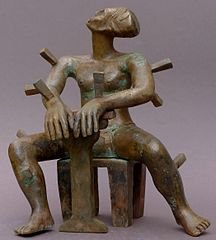 Does that make us susceptible? I don't know...maybe. Where it becomes dangerous is on the sociopolitical landscape. I ask myself this questions from time to time: How can people stay narrow minded? If I'm in a grumpy mood, I might think people just don't have the intelligence to witness dynamics in the macro. On an average day, I think people don't have access to an educational system to give them opportunity to think critically about their social situations. But in an age when you can gather an Associates Degree education on any subject through the use of YouTube, then that theory goes out the window. Then if you also consider how pop culture continuously offers people opportunities to think critically about serious issues. It starts to seem like people are choosing to be susceptible.
Does that make us susceptible? I don't know...maybe. Where it becomes dangerous is on the sociopolitical landscape. I ask myself this questions from time to time: How can people stay narrow minded? If I'm in a grumpy mood, I might think people just don't have the intelligence to witness dynamics in the macro. On an average day, I think people don't have access to an educational system to give them opportunity to think critically about their social situations. But in an age when you can gather an Associates Degree education on any subject through the use of YouTube, then that theory goes out the window. Then if you also consider how pop culture continuously offers people opportunities to think critically about serious issues. It starts to seem like people are choosing to be susceptible.
Nothing we do is that simple. It'd be great if we could just end there. There is something resonate about thinking, "People are inherently smart enough to broaden their intellectual perspective, but choose to stay susceptible," and in a certain sense it's true but there's a little more to it.
Your existence is dependent on being accepted by a certain group of people. If the majority of the people in your family and circle of friends are racist, homophobic, domineering, and destructive, then in order for you to survive you must accommodate those values so as to retain connection to the people who have shown you love and support your entire life. Yeah, ideally we would be brave and do the work to change those family members, but most people are not thinking about bravery, people think about survival.
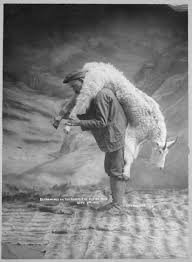 Self-preservation will dictate that you will conform to your surroundings. We see this all the time. A woman stays in a relationship with a guy who has a lower intelligence and she will keep herself dumb. Why? For love. We're social animals and need connections with other people. Unless you have Aspersers Syndrome like me and are socially inept, then you're going to conform.
Self-preservation will dictate that you will conform to your surroundings. We see this all the time. A woman stays in a relationship with a guy who has a lower intelligence and she will keep herself dumb. Why? For love. We're social animals and need connections with other people. Unless you have Aspersers Syndrome like me and are socially inept, then you're going to conform.
People are choosing susceptibility out of survival. In our society, you really have to work to stay ignorant, you have to work hard to dehumanize entire groups.
So outside of self-preservation, why would we spend so much energy on justifying the most negative parts of ourselves? At this point, Girard's theory of the memesis makes the most sense. Largely, it makes sense to me because it coincides with my ideas of self preservation and modalities of collectives staying unified.
I'm not going to break down Girard in it's entirety. You'll have to do that work, but in short Girard posits individuals and groups mimic desire and desire creates conflict between individuals and groups (mimetic rivalry) attempting to satisfy the same desire. This goes beyond resources. It rolls over into abundance as well. I would even argue mimesis is more intense in abundance. Maybe mimesis doesn't even start until human populations reach abundance. But I should save that argument for another nerdy post. Oh, yeah, in short... To calm the conflict (the problems of conflict), we create a scapegoat. So we place all the blame on something, someone, somebody, some people, anything that will unify the group who were fighting amongst themselves. We sacrifice the scapegoat and then we worship the scapegoat.
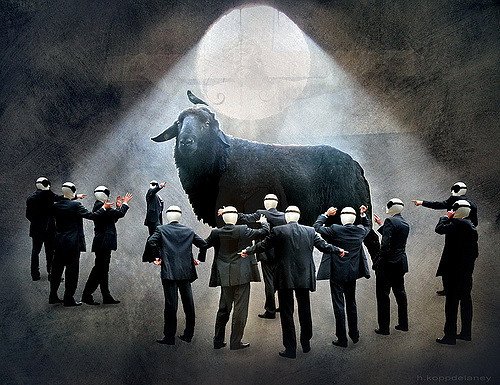
I'm going to take Girard one step further. I don't think it's only desire that triggers the scapegoat mechanism. Yes, desire creates conflict (I'll give him that). But it's the stress triggered by the conflict that triggers the scapegoat mechanism in people. So I argue that stress is the primary trigger for scapegoating. But more or less, stress will keep us narrow minded. It forces us into a position to find a scapegoat (i.e., racism, sexism, homophobia, etc.). All this is archaic, but we do it everyday. Remember how I started this post? With the Hollywood structuralism comment? Yeah, it's the same deal.
When you get stressed at work, what do you do? Do you reflect on your own inadequacies? Make adjustments? Move forward? Maybe if your degree is in psychology, but for most of us we find someone else in the office to blame. We see this all the time as well. There are changes at the office, and then all the workers panic, and then one person starts getting bullied more so than others in the group. Said individual starts to consider changing jobs. They quit. Then you rehearse who that person was and what they were like and how you didn't like them over and over and over and over and over and over, you keep talking about the poor fool you sacrificed and sent into the wilderness. Yup, you were made into a social dupe by one simple structural technique: stress.
Does that mean you're keeping yourself susceptible? Or you are not intelligent enough to see through the veil? No. That's not the case. You've been played by those who structure society in the same way Hollywood structures movies. Play the right music, show the right cinematography, and like magic: You follow.
Support a Native owned Etsy shop, Allies United, where I offer unique merch for allies of social justice movements, like MMIW, Native Lives Matter and Black Lives Matter. Take a look inside my Etsy shop here: etsy.com/shop/AlliesUnited.
Humanitarian Effort for the Rich: Hollywood's Humanizing Project
When I watch movies, I tend to watch independents. Sometimes I'll watch the Hollywood independents, if it looks like they're only going to modestly apply structuralism. I like to think I'm savvy. I don't want to feel like I'm a monkey watching for bananas, which Hollywood has turned into a science. If you don't know how structuralism has put your brain on repeat for the last five decades, hit me up on the comments below and I'll explain. This post is for Hollywood's newest charity: Save the Rich!I've noticed this trend for quite some time. Hollywood likes to showcase the uber-wealthy as their protagonists.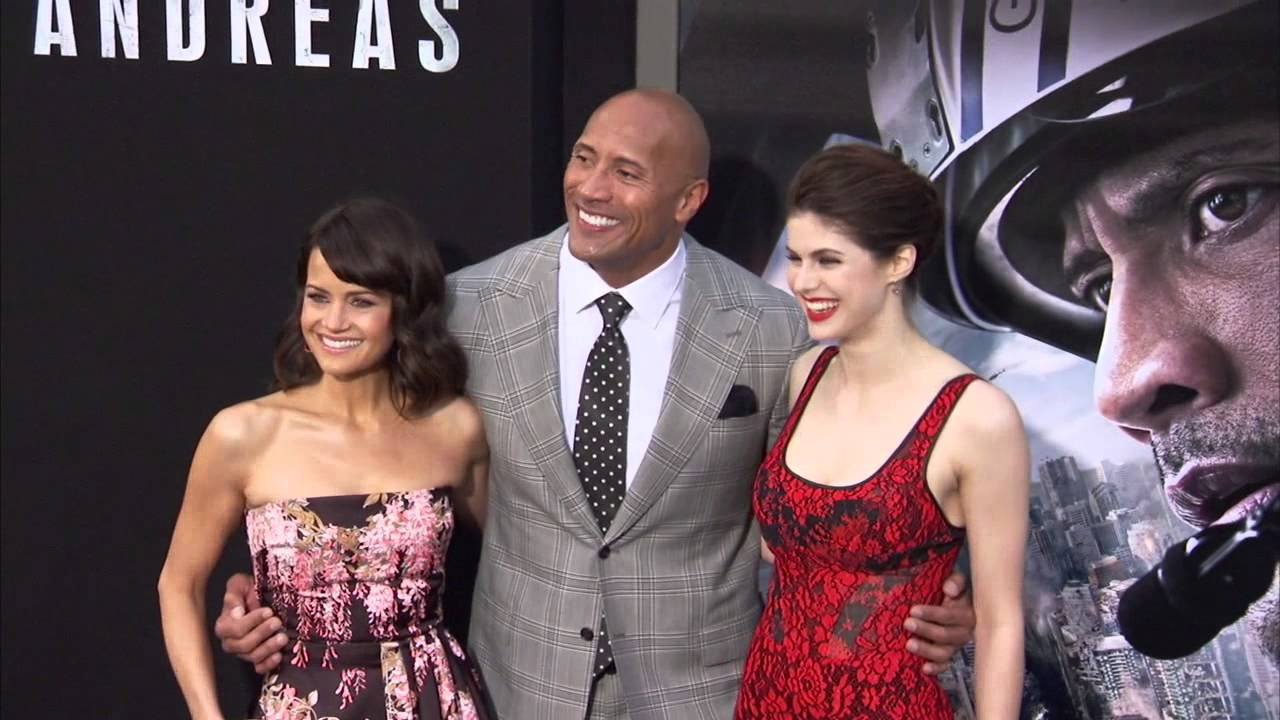 So my sons came back from Wal-Mart with the movie San Andreas. It stars Dewayne Johnson, otherwise known as The Roc. I'm not prone to watching these big Hollywood productions, but my sons were excited to watch the movie and it was entertaining enough. I watched to the end. I thought I was going to predict a few things and it was nice to find out I was wrong. I'm so overly focused on structuralism that sometimes I miss the connections.Then there was the hyper masculine motif that could not be balanced by vain attempts to masculinize one female character. Ultimately, it was a damsel in distress production. Nothing new there.
So my sons came back from Wal-Mart with the movie San Andreas. It stars Dewayne Johnson, otherwise known as The Roc. I'm not prone to watching these big Hollywood productions, but my sons were excited to watch the movie and it was entertaining enough. I watched to the end. I thought I was going to predict a few things and it was nice to find out I was wrong. I'm so overly focused on structuralism that sometimes I miss the connections.Then there was the hyper masculine motif that could not be balanced by vain attempts to masculinize one female character. Ultimately, it was a damsel in distress production. Nothing new there.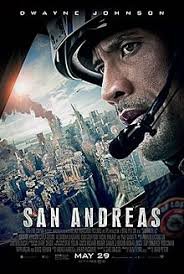 What stood out to me most was all the poor people running around the collapsing cities, and for some reason none of those impoverished people could lead in this storyline. They had to make the main characters uber-wealthy, with jet setting and mansion living. They dined in high rise buildings and took first class airplane trips to volleyball games. These were seven figure folks. And as they ran past all those poor people in the cities (the ones who got crushed by buildings and water), I kept trying my hardest to empathize for these uppity rich people as they tried to escape with their lives. Because somehow their lives were so much more important than the lives of the average people who were trying to escape the same natural disaster. So much more important than our lives that the cameras were trained on them.So Hollywood wants you to feel sorry for the rich. Why would they be humanizing a small group of people who exploits everyone else on the planet? I'm sorry. I'm not trying to be callous. But why do the rich get this privileged treatment, while impoverished people are constantly demonized and dehumanized by news and popular media.Lucky, for my sons, they have a father who can teach them how to see through the veil. Is it just me? Or have you also noticed all the hyper wealthy characters on these movies? It seems like every movie has some type of rich person as the lead or emotionally connected to the lead person. It is so blatant it makes me wonder why Hollywood is working so hard to humanize this select group of people.
What stood out to me most was all the poor people running around the collapsing cities, and for some reason none of those impoverished people could lead in this storyline. They had to make the main characters uber-wealthy, with jet setting and mansion living. They dined in high rise buildings and took first class airplane trips to volleyball games. These were seven figure folks. And as they ran past all those poor people in the cities (the ones who got crushed by buildings and water), I kept trying my hardest to empathize for these uppity rich people as they tried to escape with their lives. Because somehow their lives were so much more important than the lives of the average people who were trying to escape the same natural disaster. So much more important than our lives that the cameras were trained on them.So Hollywood wants you to feel sorry for the rich. Why would they be humanizing a small group of people who exploits everyone else on the planet? I'm sorry. I'm not trying to be callous. But why do the rich get this privileged treatment, while impoverished people are constantly demonized and dehumanized by news and popular media.Lucky, for my sons, they have a father who can teach them how to see through the veil. Is it just me? Or have you also noticed all the hyper wealthy characters on these movies? It seems like every movie has some type of rich person as the lead or emotionally connected to the lead person. It is so blatant it makes me wonder why Hollywood is working so hard to humanize this select group of people.
Support a Native owned Etsy shop, Allies United, where I offer unique merch for allies of social justice movements, like MMIW, Native Lives Matter and Black Lives Matter. Take a look inside my Etsy shop here: etsy.com/shop/AlliesUnited.
Arachnid Vs Reptilian: The Thirst for Brutality in Controversial Topics
The fangs of a snake might seem to overpower the fangs of a spider, and on the surface it can appear as though the match is uneven. But we can't forget the impulsiveness of the snake and the patience of the spider. And we must remember a black widow sits nicely on the tongue of a viper. Its patience is beyond the fast acting poison in its bite.https://youtu.be/Bt1DDVl5IJAWe like to think of ourselves as civilized. We'd never want to watch two creatures battling it out to the death. And it would true. We don't want to see it. So why do we? Why do we turn on the news and watch as people oppress other people, playing out the dramas of the worst parts of the human condition?This post came about by two interactions. One was with my friend Brandon. When we were walking the track at Northeastern State University here in Tahlequah, Oklahoma, he asked me about my novel. And oh did I tell him. That's one question you have to be careful of. Ask me about my writing and I'm going to talk incisively for about fifteen minutes straight. I'm sure he regretted the question after he asked. The other? It was from an exchange with a fellow blogger here on my website. They left a comment on my post about handling controversial topics in literature, Biting the Hand that Feeds Us: Handling Controversial Topics in Fiction, Art, and Life. Again I started rambling with this individual. I'm a relatively quiet person until you ask me to talk about literature, and then I'm annoyingly vocal.So why is it? Why do we love controversial topics on the news, in books, and at the movies? On the surface we might appear to be diabolical and love to feed off negative energy, and to an extent that might be true for some of us, but ultimately there's more to it.
"There are spiders whose bite can cause the place bitten to rot and to die, sometimes more than a year after it was bitten. As to why spiders do this, the answer is simple. It's because spiders think this is funny, and they don't want you ever to forget them.” -- Neil Gaiman
My novel, Uncle Called Him Spider, features the battle of arachnid (Dean) versus reptilian (Snow). My protagonist (Dean) is arachnid and my antagonist (Snow) is reptilian. Both are unlikable. And to a certain extent you empathize with both as the novel progresses. Since Dean is the protagonist you have a little more reason to root for him but by his ruthless actions you don't really want to. Since you know less about Snow you want to root for her but she is more ruthless than Dean. Seemingly if you knew more about her you might find yourself at a loss of who to champion.So what do you do? The same thing you do when watching a spider and snake fight. As you watch, you can't help but have empathy for both and not want either to die in the battle. But do you turn away? No, you don't. You keep watching. Why? Is it because you want to know the outcome? That would be part of it. But I argue there's a little more.
“To the unspoiled, even a snikebite is a loving kiss. But to the spoiled even a loving kiss is a snake bite.” -- Mikhail Naimy
There's a missing component to modern literary novels. They're soft. Literary novelist are supposed to hold a mirror to society and force us to confront issues like racism. You find more value in a Hollywood movie like Get Out, which confronts liberal racism through the Horror genre. Are contemporary literary novelists pandering? Do they seek to conform to ideological versions of society so as to not insult a privileged and weak-minded audience? Or are literary writers cowards who underestimate the pallet of the modern literary reader?I know, you're wondering why we watch the spider and snake battle to the death. It's because we can see ourselves reflected in the battle. We're looking at a mirror, and by watching the brutality on the news like the brutality of two predators fighting to the death, we have the opportunity to learn something about ourselves. Its introspection we thirst for. We need to see the worst parts of ourselves reflected in others. There is no other way to purge our own bloodlust. And we literary writers should be brave enough to satisfy our readers with the opportunities to self-reflect.
Main Character Slam, Drop, Kick!
Revision is a little punk b#?ch! There I am toiling away on the second draft, almost to the end of the novel and starting to think about characters in the novel (mentally preparing for the "sweeps" portion of my revision process), and then I come to realize my main character is an asshole.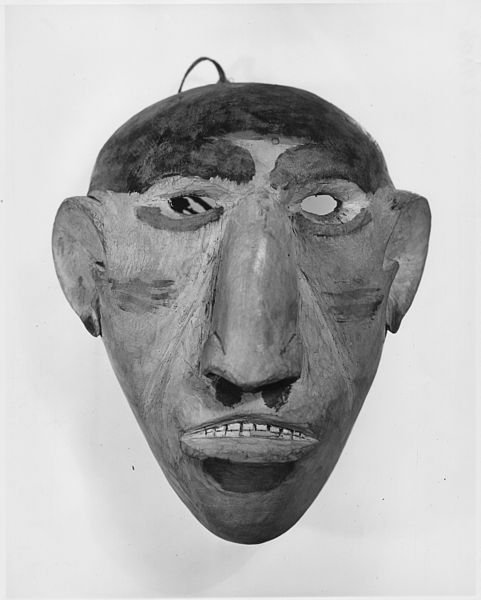 I toil, yes. Right now I'm busting down walls of action and scene selection as I move through the more tangible portion of the novel. The second draft for me is about pulling out concrete details. I don't get to the inner monologue of the narration until the start of my third draft, which I affectionately call "sweeps" because I'll repeatedly sweep over the text and wipe away unnecessary information while adding more details. The sweeps portion of my revision process is when the story begins to look like a real story.So I had already come to the determination that my main character, Dean's, main flaw was that he didn't trust people. I had concluded he only trusted his wife's opinion so when his coworkers came to him about concerns he didn't trust what they were saying. Now I don't hit readers over the head with this aspect of his character. Through Dean's repeated second guessing, the reader eventually realizes this flaw: lack of trust. I do this so readers will pick up his character flaw only moments before the climax of the novel. Then the reader understands his final actions a little better.
I toil, yes. Right now I'm busting down walls of action and scene selection as I move through the more tangible portion of the novel. The second draft for me is about pulling out concrete details. I don't get to the inner monologue of the narration until the start of my third draft, which I affectionately call "sweeps" because I'll repeatedly sweep over the text and wipe away unnecessary information while adding more details. The sweeps portion of my revision process is when the story begins to look like a real story.So I had already come to the determination that my main character, Dean's, main flaw was that he didn't trust people. I had concluded he only trusted his wife's opinion so when his coworkers came to him about concerns he didn't trust what they were saying. Now I don't hit readers over the head with this aspect of his character. Through Dean's repeated second guessing, the reader eventually realizes this flaw: lack of trust. I do this so readers will pick up his character flaw only moments before the climax of the novel. Then the reader understands his final actions a little better.
"Developing a character with genuine depth requires a focus on not just desire but how the character deals with frustration of her desires, as well as her vulnerabilities, her secrets, and especially her contradictions." -- By David Corbett
Then I'm thinking this through, getting ready to begin my "sweeps" stage of revision, and I realized not only does he not trust people but the way he deals with this mistrust is by being critical. So I'm thinking through the internalization of a third person point of view, which is how the novel is written, and I'm simultaneously reading Haruki Murakami's Kafka on the Shore (we all know Murakami is the king of internal monologue), and I'm asking myself, "So how should I gear Dean's internal monologue?" Then I asked myself, "How would he talk to his coworkers if he had no filter?" All of a sudden I heard Dean start to be judgmental. In fact, he was so harsh I could only conclude one thing: Dean's an asshole.
"Great fiction is fueled by bad decisions and human weakness." -- By Kristen Lamb
It's kinda scary because he's loosely based on myself. That must mean I'm an asshole. I'll have to mediate on that one and get back to you later. For now, Dean is the asshole (not me, well, maybe me), and he will be an unlikable character. So for some strange reason that gets me excited. I like the idea of writing an unlikable character. More evidence I might be an asshole. But the reason I'm excited to write an unlikeable character is for the challenge. I've not had a character who came to fruition as so distinct as unlikeable. This is an exciting new avenue for me.So I guess it'll be. I'm writing about an asshole, who may or may not be like myself, but either way I'm excited for the "sweeps."
Support a Native owned Etsy shop, Allies United, where I offer unique merch for allies of social justice movements, like MMIW, Native Lives Matter and Black Lives Matter. Take a look inside my Etsy shop here: etsy.com/shop/AlliesUnited.
(Image was borrowed from Wikimedia Commons)
The Magic of Intermountain Youth Center
I said it before. The last grade I completed was the sixth grade. Then later in life I went on to obtain a Master's Degree. I think a lot of it had to do with riding waves. Not in the ocean. I've never been daring enough to take on those types of challenges. But riding waves of opportunity. Sometimes I look back and it's interesting to see how it all lined up and came to fruition, as though in symmetry, like musical notes being plucked from the strings of a guitar. In time and rhythm it can make a beautiful song.So how do you go from being a severe introvert to completing programs in higher education? A lot of luck. A lot of patience. I give most credit to one organization: Intermountain Youth Centers. They were once located throughout New Mexico and had a facility in Colorado, but now they operate out of Arizona only. They are a behavioral health organization, whose beginnings were in Native American communities. When NM state started funneling money toward certain facilities, a place like Intermountain, which specialized in helping Native American youth, started to get less and less funding. In the end, Intermountain was too narrowly focused for New Mexico, who wanted to fund the fewest and least expensive behavioral health facilities. I worked in Santa Fe.There's something about being placed in a position to be a mentor that can change the way you see the world. I was a very negative person. Life was hard and assumed it would always be. When Intermountain employed me to run "strength based" programming with Native youth, I started to change. I had to be a role model who showed positivity for days at a time. If I was going to help these young men, I would need to follow the "strength based" model closely. In other words, I was bought into the organization. I believed in its philosophy.What happened? I went from being so negative that most of people reading this post right now would have never associated with me. I was not the type to draw people in. In fact, I was pretty good at pushing people away and keeping people at a distance. From that, I turned into someone who was always filled with gratitude. I was so greatly changed by Intermountain that I'm still guided by its philosophy. And I haven't been with the organization since 2009. I mostly say good things to people. When someone is trying to draw out negativity, I tend to start saying positive things. Not that I don't have my bad days like everyone else. But for the most part I tend to usually be in a good mood and like to focus on solutions and problem solving rather than wallowing in the muck of self pity.
I give most credit to one organization: Intermountain Youth Centers. They were once located throughout New Mexico and had a facility in Colorado, but now they operate out of Arizona only. They are a behavioral health organization, whose beginnings were in Native American communities. When NM state started funneling money toward certain facilities, a place like Intermountain, which specialized in helping Native American youth, started to get less and less funding. In the end, Intermountain was too narrowly focused for New Mexico, who wanted to fund the fewest and least expensive behavioral health facilities. I worked in Santa Fe.There's something about being placed in a position to be a mentor that can change the way you see the world. I was a very negative person. Life was hard and assumed it would always be. When Intermountain employed me to run "strength based" programming with Native youth, I started to change. I had to be a role model who showed positivity for days at a time. If I was going to help these young men, I would need to follow the "strength based" model closely. In other words, I was bought into the organization. I believed in its philosophy.What happened? I went from being so negative that most of people reading this post right now would have never associated with me. I was not the type to draw people in. In fact, I was pretty good at pushing people away and keeping people at a distance. From that, I turned into someone who was always filled with gratitude. I was so greatly changed by Intermountain that I'm still guided by its philosophy. And I haven't been with the organization since 2009. I mostly say good things to people. When someone is trying to draw out negativity, I tend to start saying positive things. Not that I don't have my bad days like everyone else. But for the most part I tend to usually be in a good mood and like to focus on solutions and problem solving rather than wallowing in the muck of self pity.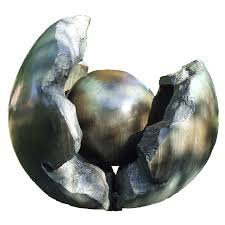 I was with Intermountain for about six years and it took the majority of that time to make the complete transformation. They say every cell in your body is made new by regeneration every seven years. I'd say it was pretty close to that mark. My DNA must have been changed in that space of time. I certainly don't feel like the person I was before Intermountain. Now that I'm back in my hometown of Tahlequah, Oklahoma it's interesting to see how hard it is for people who knew me before to let me change. I don't think people like to let other people change. But that'll have to be a post for another day.All in all: I'm lucky. I interact with people all the time, many in the latter years of their life, and they're miserable people. Ultimately, it's sad. I'm a firm believer in leading by example. My element of persuasion is just being myself. I'm not in the business of recruiting. Largely because it's counterproductive. The next time missionaries knock on your door see how fast you run to the back of the house.I see people who have good hearts allowing themselves to be swallowed by anger, frustration, and hatred. I wish I could give them my experiences at Intermountain so they'd have a chance to change for the better. We do the world service by just being positive and helping each other out. We have to trust and allow people to change on their own time.(Works Cited: Images above were borrowed from intermountcenters.com and maxpixel.com)
I was with Intermountain for about six years and it took the majority of that time to make the complete transformation. They say every cell in your body is made new by regeneration every seven years. I'd say it was pretty close to that mark. My DNA must have been changed in that space of time. I certainly don't feel like the person I was before Intermountain. Now that I'm back in my hometown of Tahlequah, Oklahoma it's interesting to see how hard it is for people who knew me before to let me change. I don't think people like to let other people change. But that'll have to be a post for another day.All in all: I'm lucky. I interact with people all the time, many in the latter years of their life, and they're miserable people. Ultimately, it's sad. I'm a firm believer in leading by example. My element of persuasion is just being myself. I'm not in the business of recruiting. Largely because it's counterproductive. The next time missionaries knock on your door see how fast you run to the back of the house.I see people who have good hearts allowing themselves to be swallowed by anger, frustration, and hatred. I wish I could give them my experiences at Intermountain so they'd have a chance to change for the better. We do the world service by just being positive and helping each other out. We have to trust and allow people to change on their own time.(Works Cited: Images above were borrowed from intermountcenters.com and maxpixel.com)